The quiet. The crunch of snow underfoot. The barren frosted trees. The stillness. All of winter’s enticing beauty.
In the stillness, color and movement of visiting wildlife bring incomparable excitement.

In the stark days of winter, a cardinal sighting or chipmunk chatter can outperform any prized ornamental bloom from sunnier seasons past.

Encouraging wildlife is more than just pure entertainment though. Supporting wildlife through the long cold winter months with food and shelter can help sustain an ecosystem.
Safe Haven
Our blooming backyards can be oasis and refuge for welcome wildlife in urban, suburban, and rural landscapes.
Trees and shrubs create the foundation of reliable safety, shelter, and nourishment for weather weary wildlife.
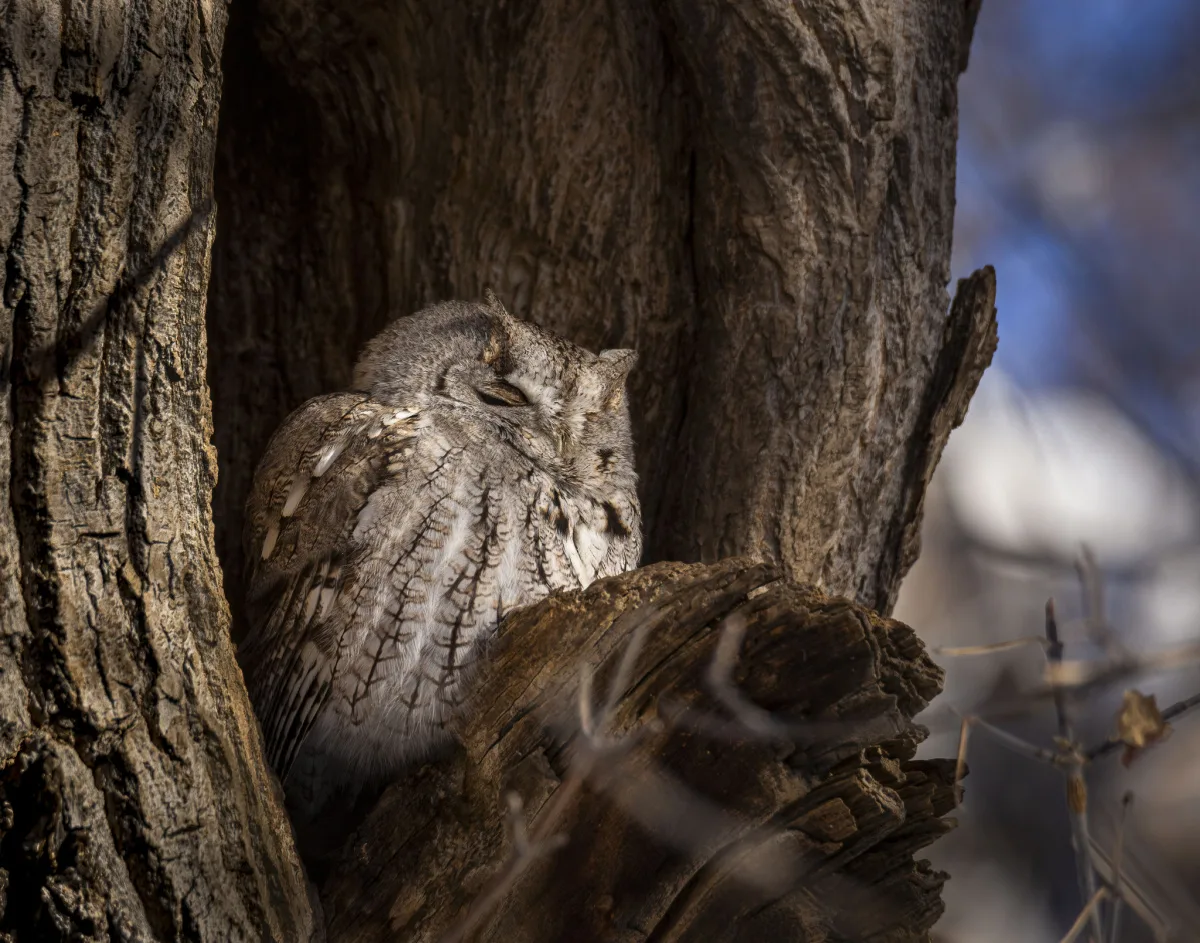
Perennials, annuals, leaf litter, and piles of brush harbor forage of seeds and other edibles for winter visitors.
Why So Wild
Native plants are often the best choice for supporting wildlife in all seasons, but especially in winter.
Wildlife and native trees, shrubs, and plants have evolved together over time building cohesive symbiotic relationships.
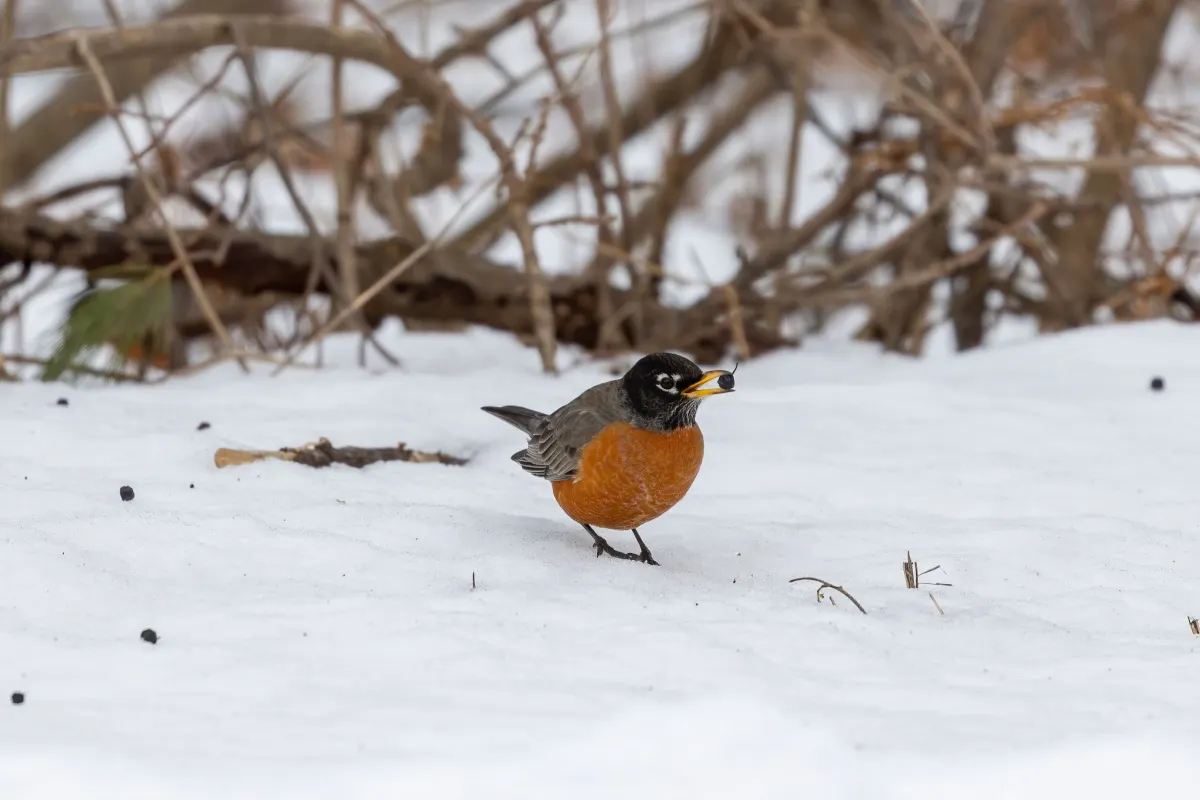
Birds and wildlife are specialists at harvesting their favorite seeds and finding nutritious insects hiding in the branches and debris of native plants in winter.
For the trees, shrubs and other plants, wildlife distributes seeds, encouraging further generations, while providing invaluable pest management services.
Who and How
Just one tree species may host hundreds of types of butterfly larvae through the winter months.
A variety of trees, shrubs, perennials, annuals, along with their leaf litter and branch piles create hospitable winter habitat to support backyard diversity.
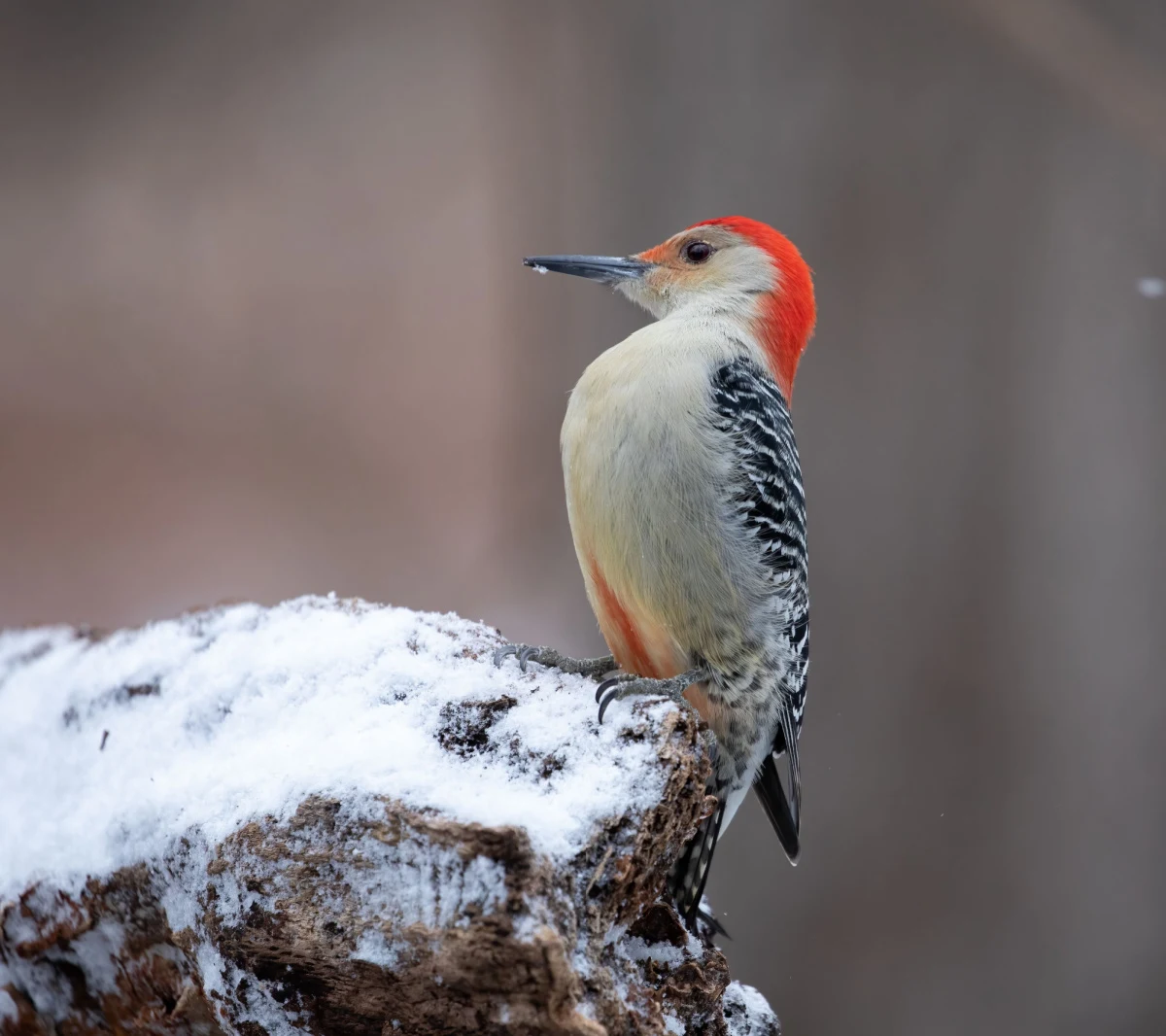
Gorgeous varieties of winter plants, including our list of 20+ Trees, Shrubs & Perennials For A Spectacular Winter Garden also help to support wildlife through winter.
Overwintering songbirds such as chickadees, cardinals, sparrows, and finches are delighted with dense evergreen shelter.
Thick tree bark and leaf litter harbor nutritious insect snacks for woodpeckers, sapsuckers, and insectivorous birds and mammals.
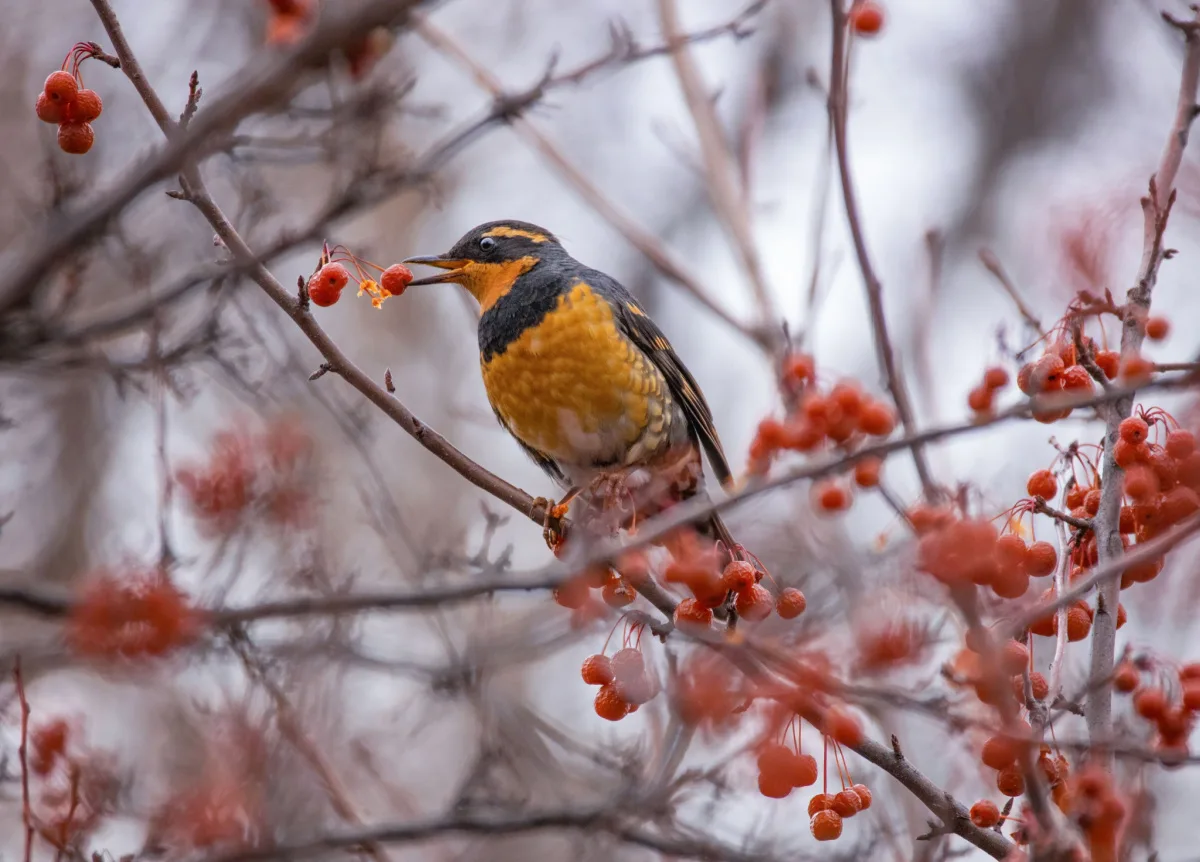
Shrubs and trees whose berries persist through winter are lifesaving food sources for many birds including waxwings, bluebirds, grouse, thrushes, and catbirds.
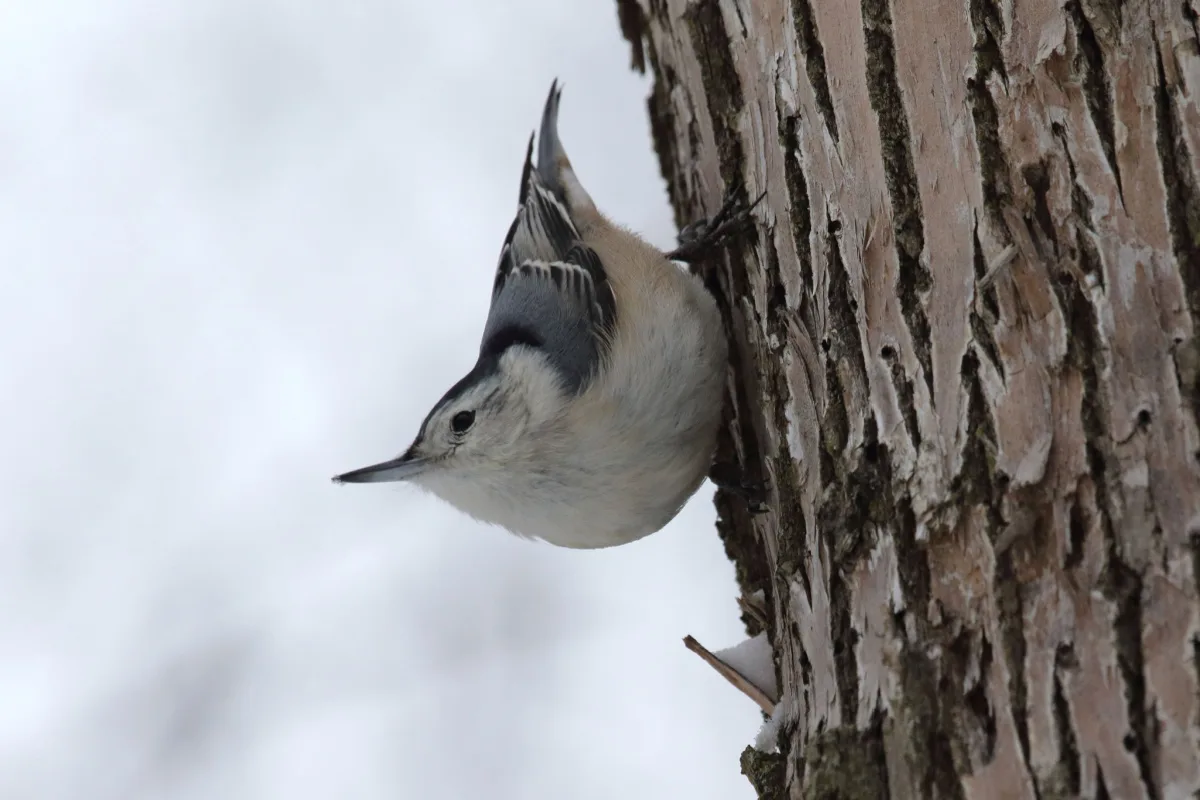
Evergreen or deciduous branches and hollows, nooks, and crannies provide nesting sites and hiding places, protecting wildlife from predators, including our own pets.
For more on protecting wildlife from our well-loved furry friends, check out Friendly Ways to Keep Cats Out of the Garden.
17+ Winter Plants for Birds and Wildlife
Here we have selected top choices of the best winter plants for birds and wildlife.
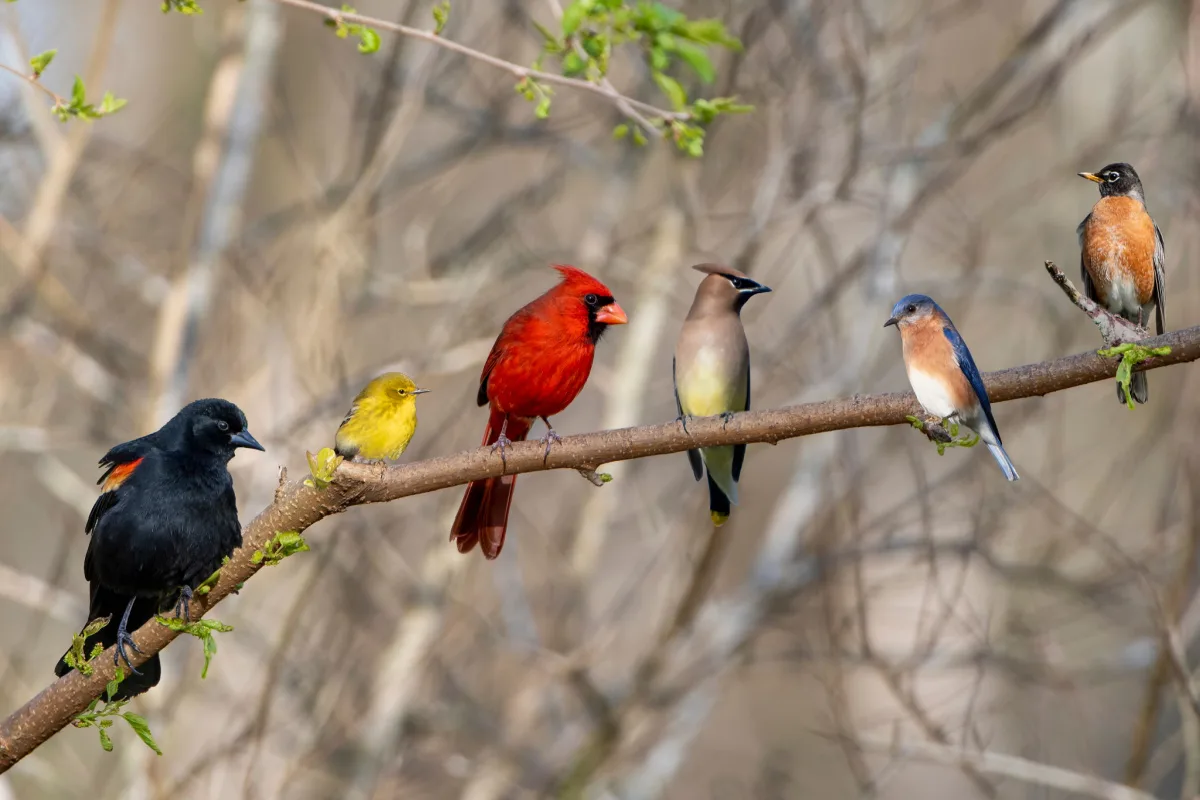
For best results, choose varieties native to your area to support wildlife where you live.
Evergreens
1. Cedar (Thuja sp.)
Of the five species of true Cedars, two originate in North America, the giant Western Red Cedar, Thuja plicata, and Eastern White Cedar or Arborvitae, Thuja occidentalis.
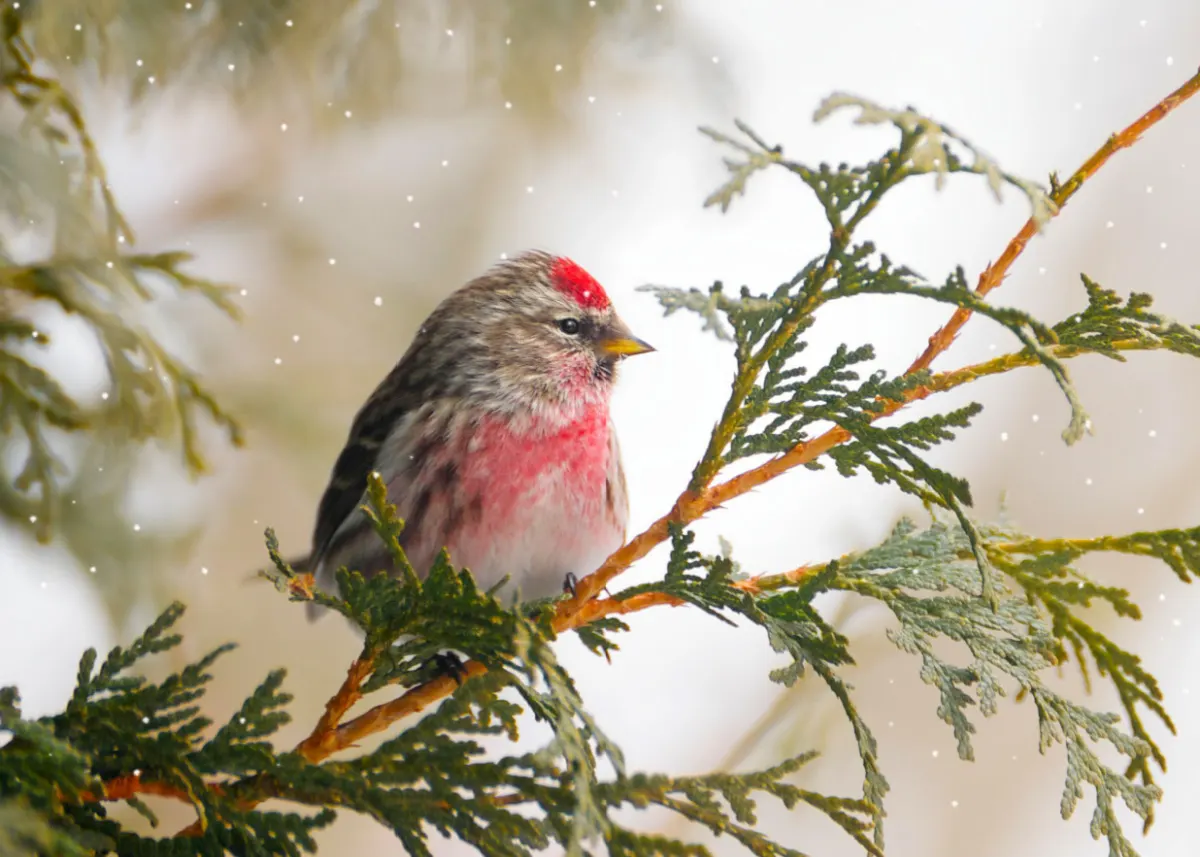
Both species offer winter refuge from cold temperatures as well as protection from predators. From the fan-shaped, scale-like leaves emerge cones that ripen in August. The seeds ripen and are dispersed September through November, feeding multitudes of migrating and winter-hardy wildlife.
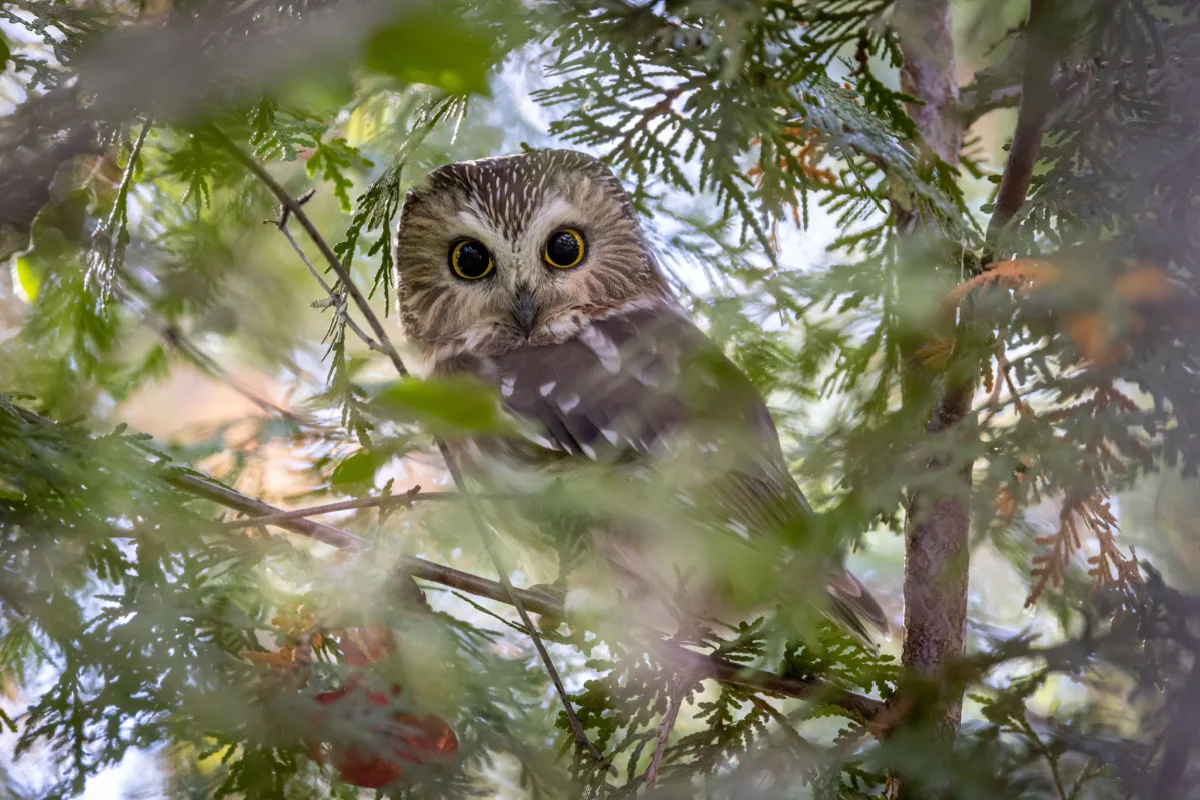
Eastern White Cedar has numerous cultivars and is a widely used evergreen plant that feeds and protects overwintering birds such as finches. Available in just about any size and shape, there are large, narrow, tall, wide, and conical varieties to choose from. Some may grow as much as 60 feet while others are tidy, globe-shaped varieties that stay small. Danica Globe Arborvitae, for example, has blue-green winter color and stays just 1 to 2 feet tall and wide.
There are a few dwarf varieties and polite garden-sized Western Red Cedar. Although, most are quite large and may reach 150 feet tall. In their native range of North America’s west coast, Alaska to California, Western Red Cedar trees can be over 1400 years old!
2. Hemlock (Tsuga canadensis)
Towering graceful hemlock with its fine needles and demure cones tips and bows, welcoming chickadees, siskins, warblers, and juncos through the long cold winter months.

The long-lived sturdy trees have a fairytale-like delicate appearance in their massive 25 to 35 foot spread and 40-to-70-foot height.
They can live well over 100 years, hosting generation after generation of winter wild folk.
Hemlock do best with some shelter from winds and hot sun but do tolerate both sun and shade in zones 3 to 8.
3. Spruce (Picea sp.)
Iconic winter evergreens, spruce trees take the wind, the cold, the ice, and heavy snow loads.
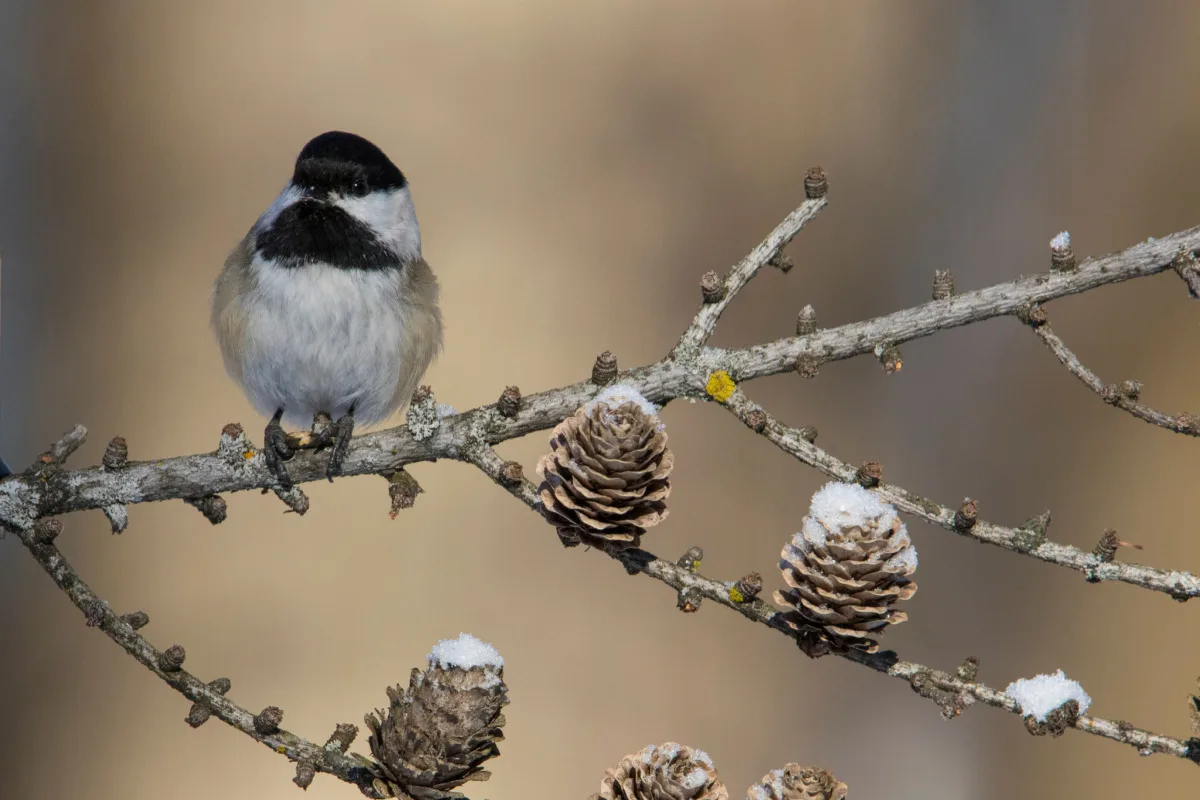
Hiding in their stiff-needled tiered branches are siskins, nuthatches, grosbeaks, and crossbills who expertly devour seeds of the smooth, scalloped, scales of spruce cones.
Spruce trees’ symmetry is exquisitely pronounced draped in snow, growing to heights of 60 to 75 feet tall in zones 2 to 7.
Small Deciduous Trees and Shrubs
4. Dogwood (Cornus sp.)
The winter wonderland superstar of native ornamental shrubs, bright red, orange, and yellow bark are striking against the greys and whites.
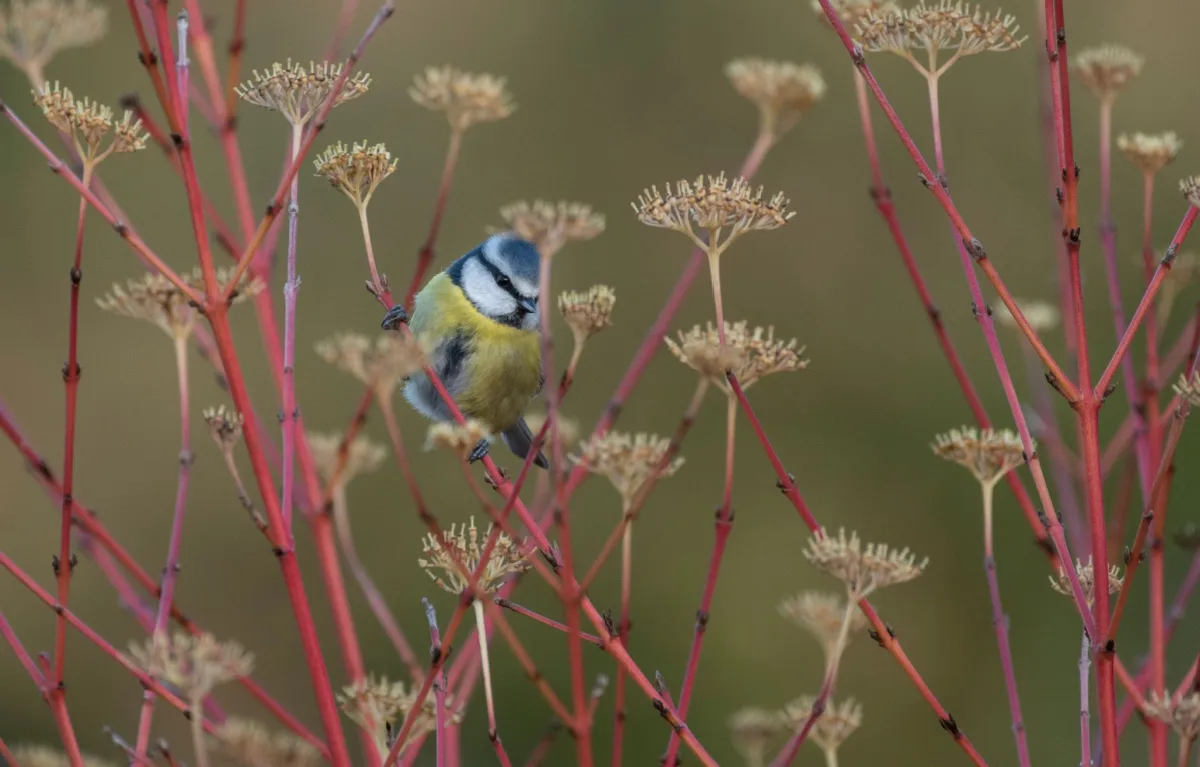
Perfect for shelter, but dogwood berries hold inside a nourishing nutlet for winter foragers like bobwhites, finches, cardinals, sapsuckers, northern flickers, and grosbeaks.
Colony forming, the 10-to-15-foot upright stems invite natural pruning from browsing deer while providing protection for smaller animals.
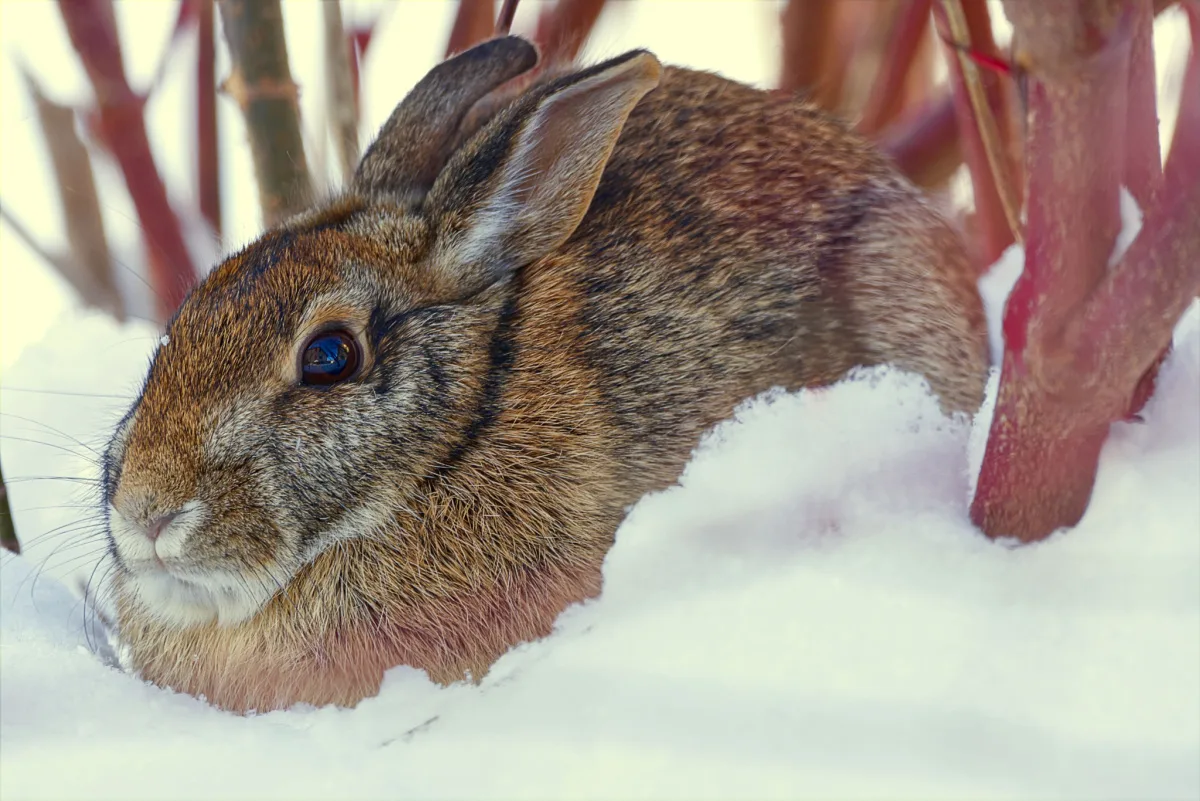
Dogwoods can be trees or shrubs. The genus has about 50 species, 16 of them found in North America growing in zones 1 to 9.
5. Viburnum (Viburnum sp.)
Known as arrowwood, high-bush cranberry, nannyberry, and many others, Viburnums range in size from 2 to 30 feet tall with several North America species.
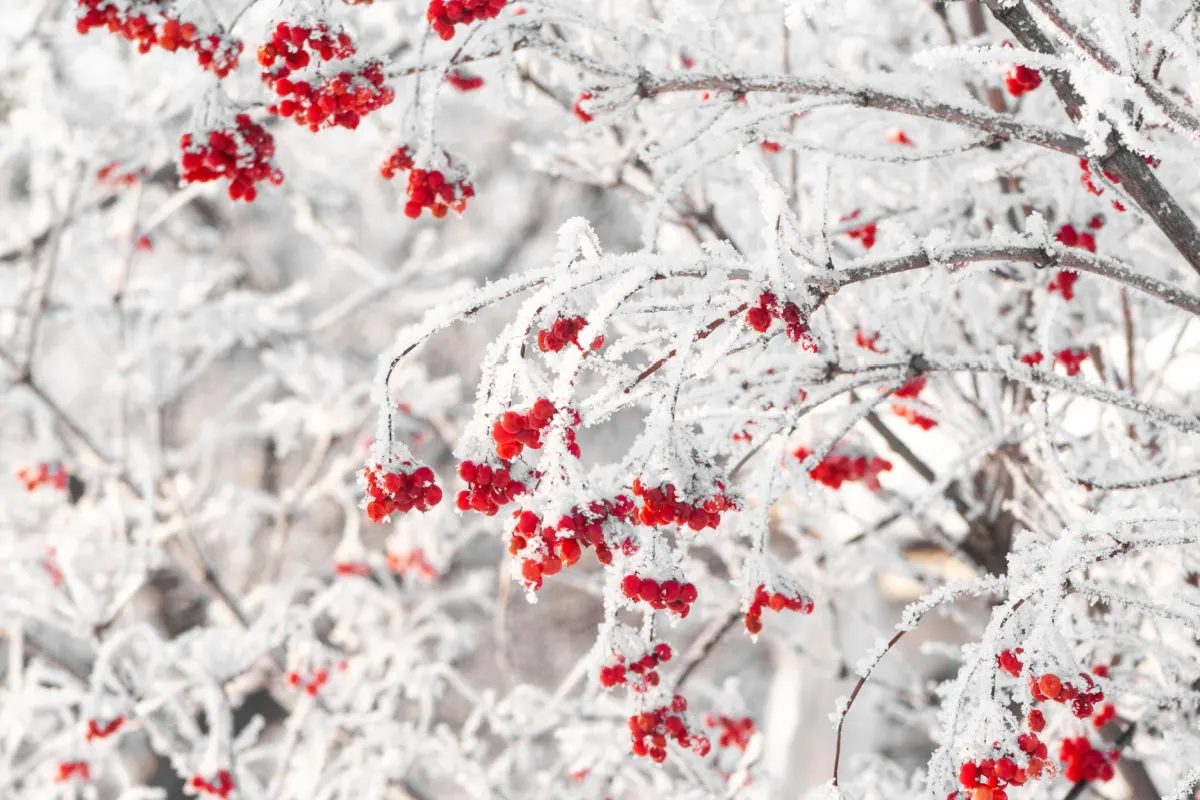
The clear bright red berries hanging in pendulous clusters of high-bush cranberry must be a welcome winter sight for birds including cardinals, blue jays, and waxwings.
A slow growing but rewarding plant, Viburnum prefer well-drained soils in full to part shade in zones 3 to 8.
6. Holly Winterberry (Ilex verticillata) or American Holly (Ilex opaca)
Waxwings, catbirds, cardinals and thrushes are among the many winter birds that find shelter in Holly’s evergreen leaves.
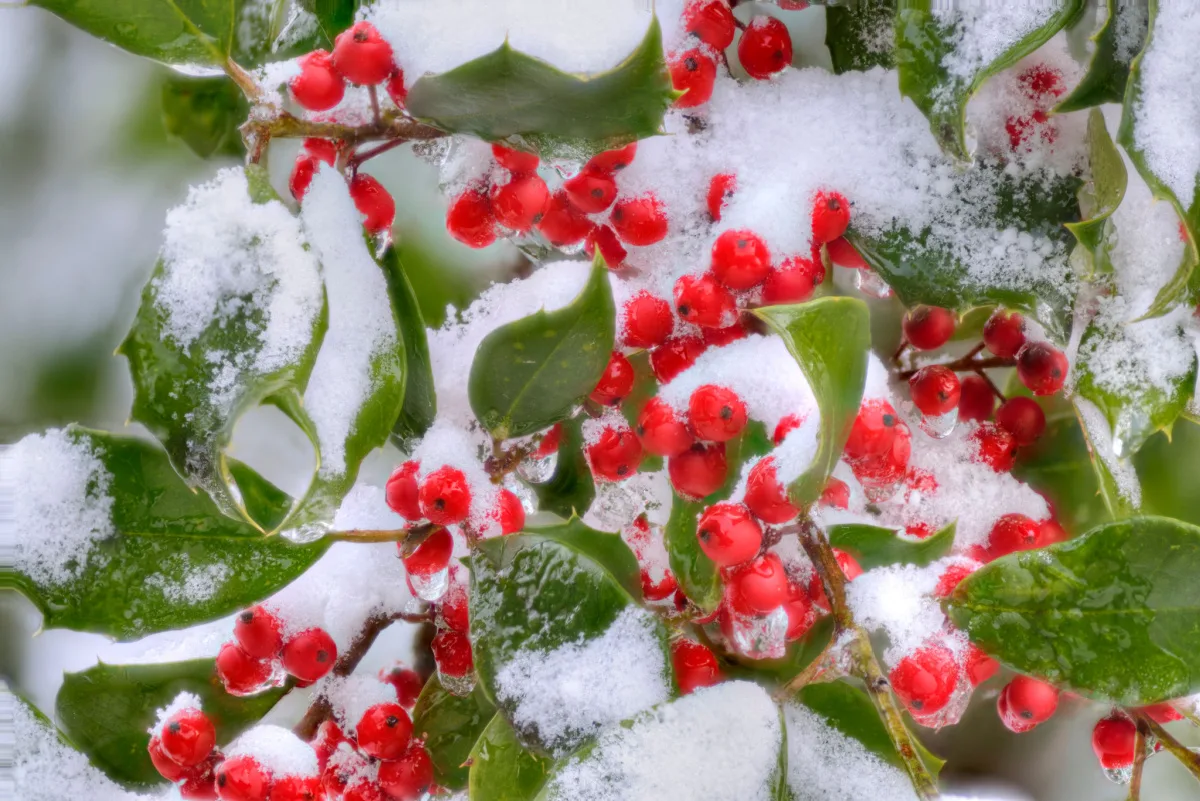
The lovely red berries of Winterberry are beyond picturesque against the stiff spiney leaves on plants that grow 3 to 12 feet tall in zones 3 to 9.
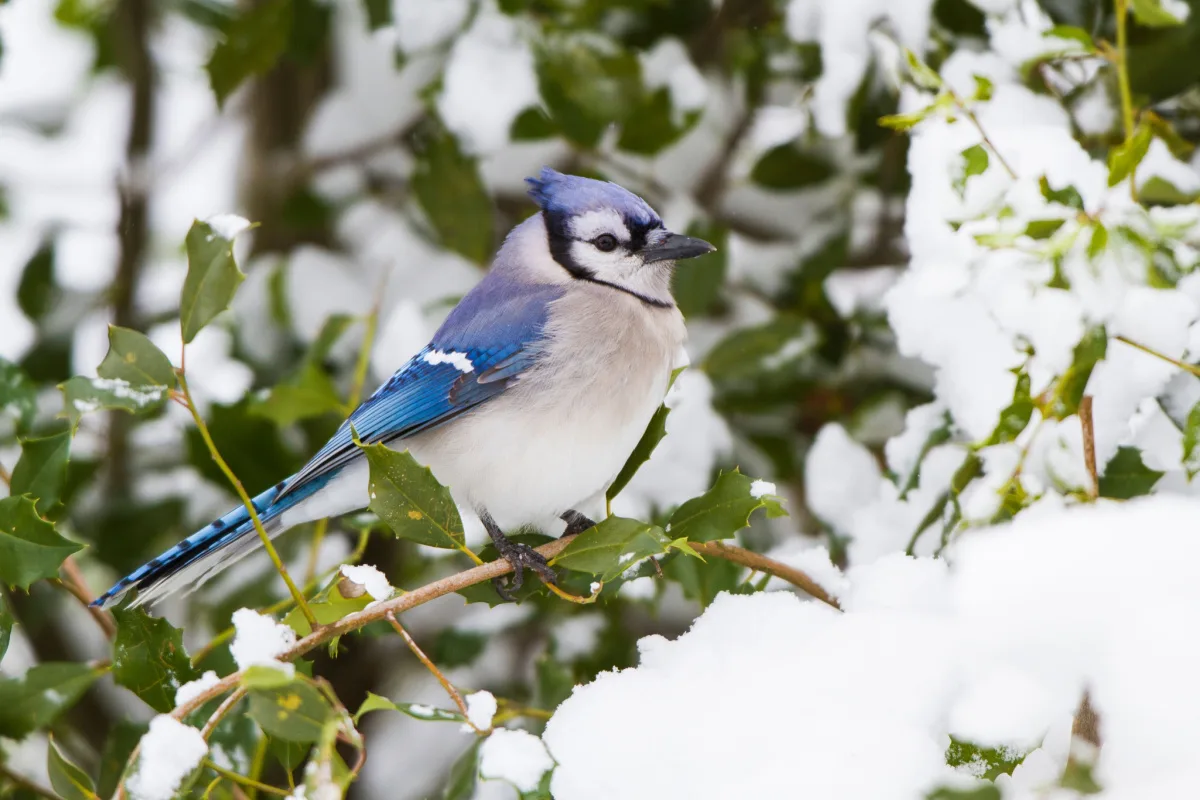
Holly needs a pollinating partner so plant a male holly nearby so your female holly can produce the pretty (yummy) berries.
7. Northern Bayberry (Myrica pensylvanica)
Berries so waxy early-Americans used them to make candles. The high-fat content provides a lot of energy for winter survivors.
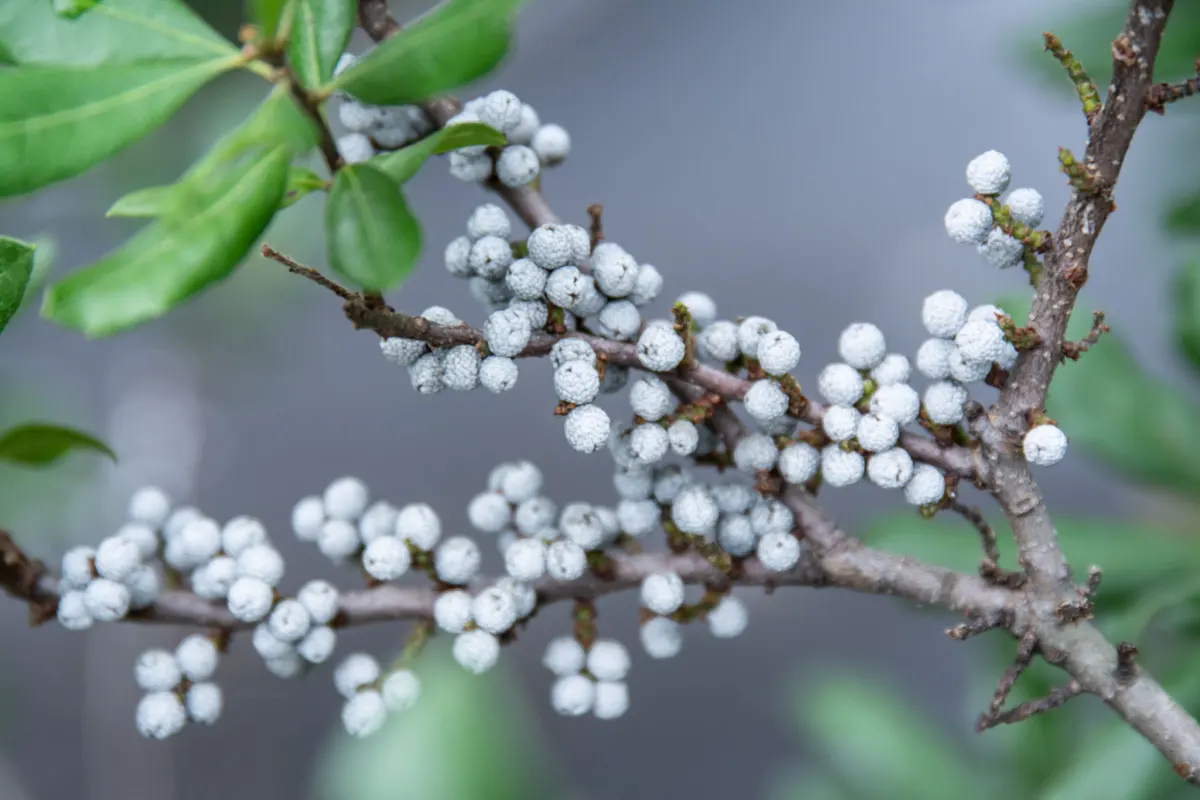
A favorite of chickadees, northern flickers, waxwings, and woodpeckers, Northern Bayberry feeds and shelters in their dense thickets.
A male and female are needed to produce Northern Bayberry, which grow 10 to 15 feet tall and wide in zones 3 to 7.
8. Crabapple (Malus sp.)
Crabapple devotees love crabapple for their masses of early spring blooms. But in winter, after a few good freezes, crabapple become a life sustaining food source for birds and other wildlife.
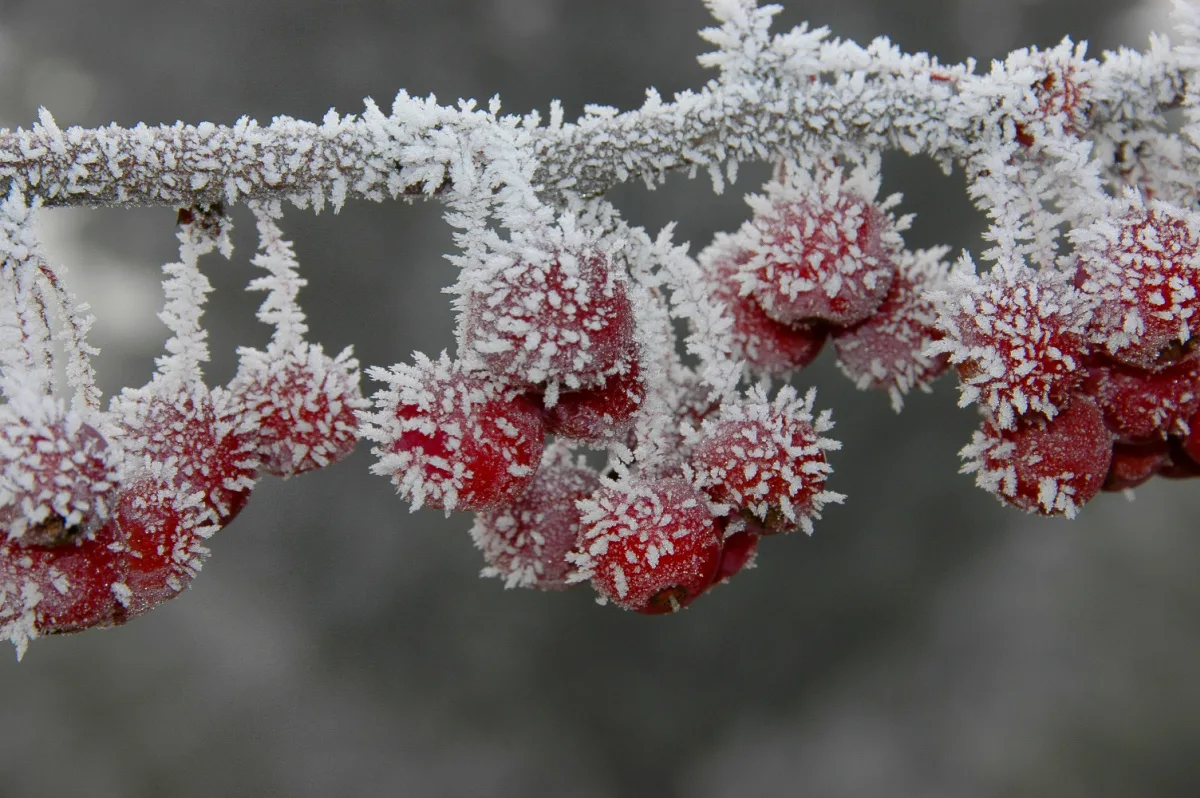
A year-round favorite, crabapple fruits in winter add color and interest dynamic visitors of finches, woodpeckers, cardinals, grosbeaks, waxwings, and jays.
There are an abundance of native crabapple varieties to choose from with new ones being developed all the time. Crabapples are generally hardy in zones 4 to 8 and grow 8 to 30 feet high.
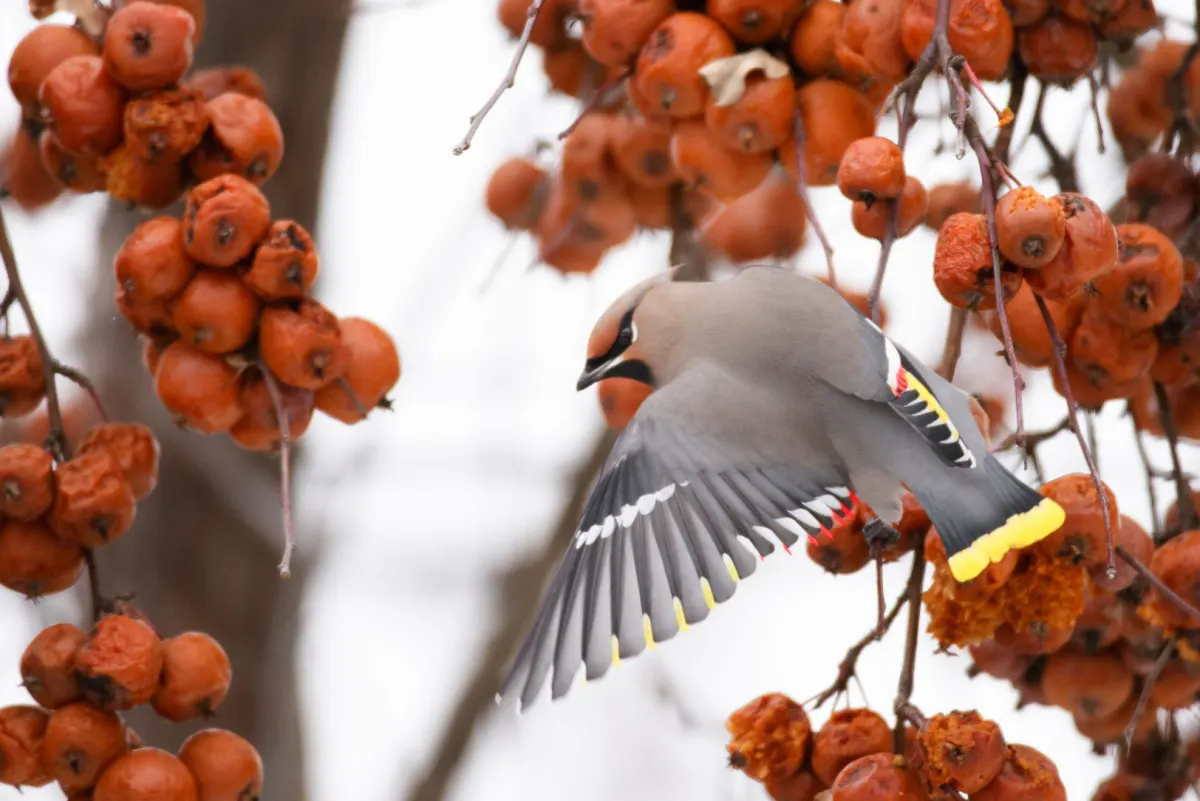
Notable species for winter birds and wildlife are Southern Crabapple (Malus angustifolia), Prairie Crabapple (Malus ioensis), Sweet Crabapple (Malus coronaria).
9. Sumac (Rhus sp.)
Bending and curving branches on open slanting trunks host tropical looking compound leaves which have exceptional fall color.
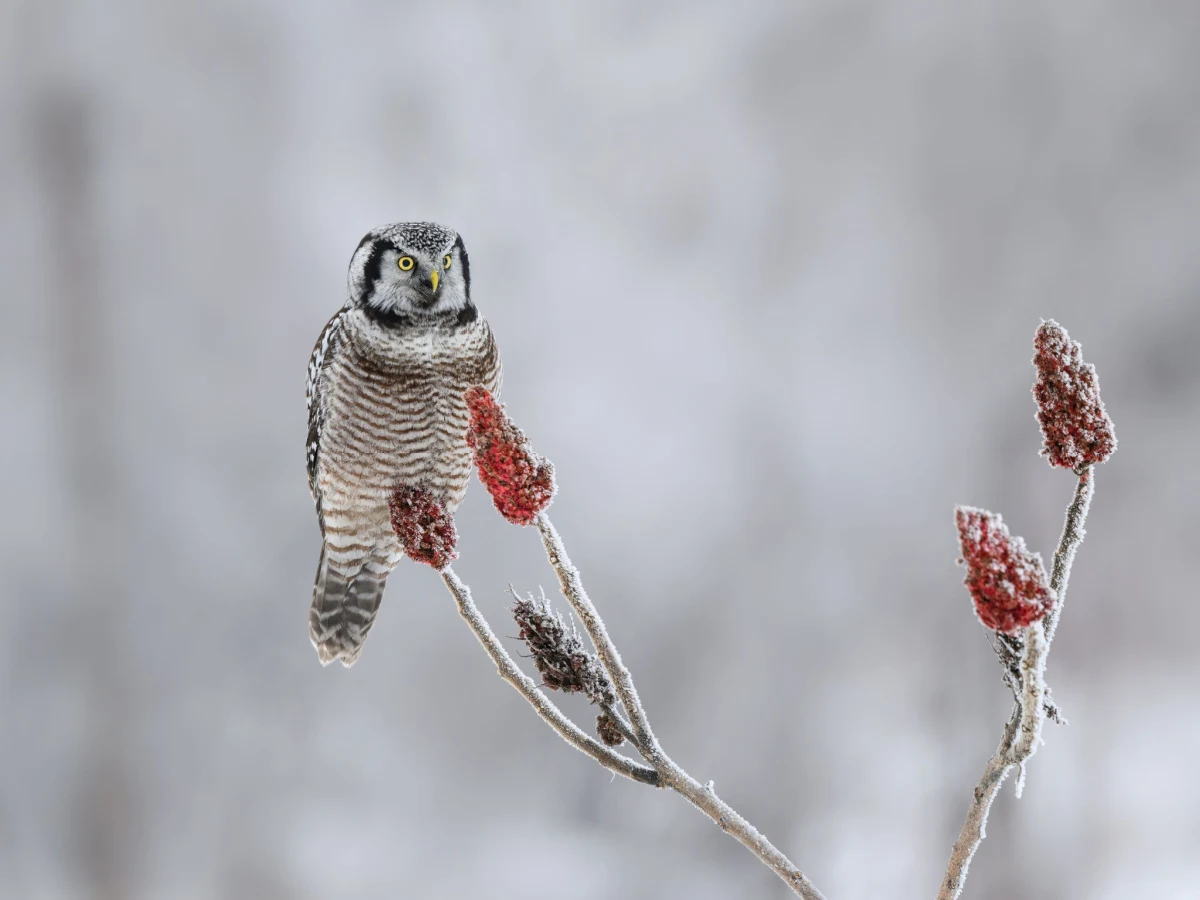
The 10-to-20-foot shrubs or small trees are topped with pyramidal clusters of berries that persist through winter, providing feasts for small mammals, as well as cardinals, chickadees, goldfinches, woodpeckers, and grosbeaks.
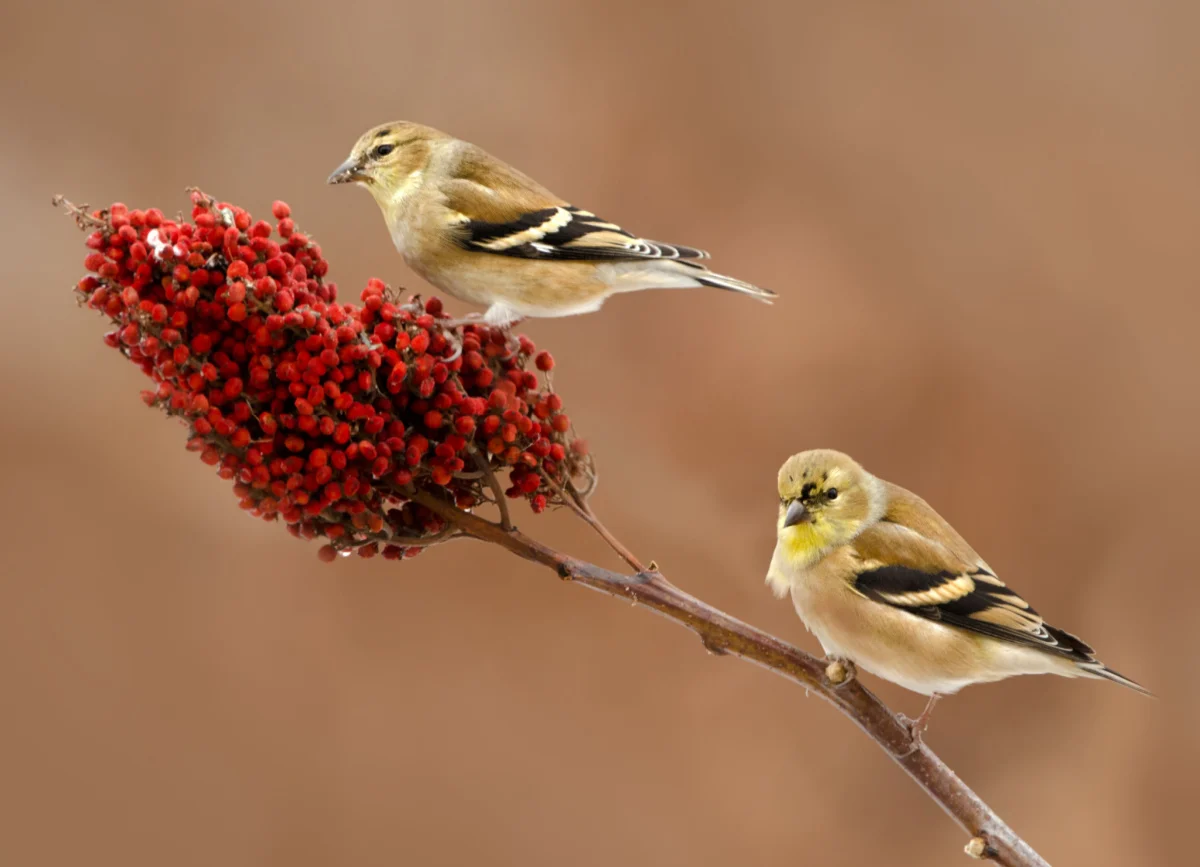
A surprising relative to cashew, mango, and pistachio, Sumac varieties abound with a native species for each region of North America.
10. Hawthorn (Crataegus sp.)
Hawthorns are small, vase-shaped, 20-to-35-foot trees with scalloped leaves and open branches that bear serious weaponry in their 1-inch thorns.
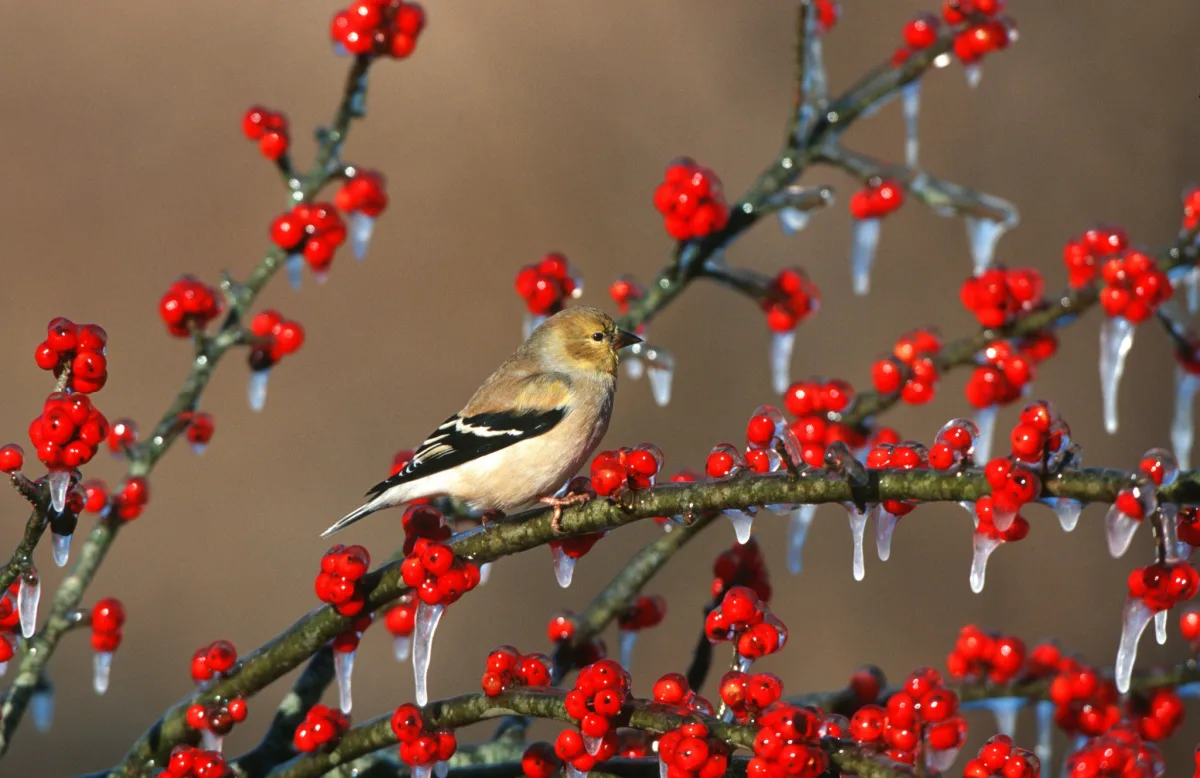
The fruits are small red pomes, often the last wild fruits available late into winter, providing emergency food for wildlife and finches, waxwings, cardinals, and catbirds.
The protective branches give refuge, shelter, and nesting because they deter predators such as hawks and owls.
Winter King (Crataegus viridis ‘Winter King’), native to southeastern USA is a pretty option with bright red persistent pomes.
Other Crataegus species native to North America excellent for wildlife are Washington Hawthorn (Crataegus phaenopyrum), Cockspur Hawthorn (Crataegus crus-galli), and Downy Hawthorn (Crataegus mollis).
11. Mountain Ash (Sorbus sp.)
Finches, grosbeaks, grouse, and waxwings cheerfully congregate in masses of noise and color feasting on the hanging clusters of orange-red Mountain Ash berries in winter.
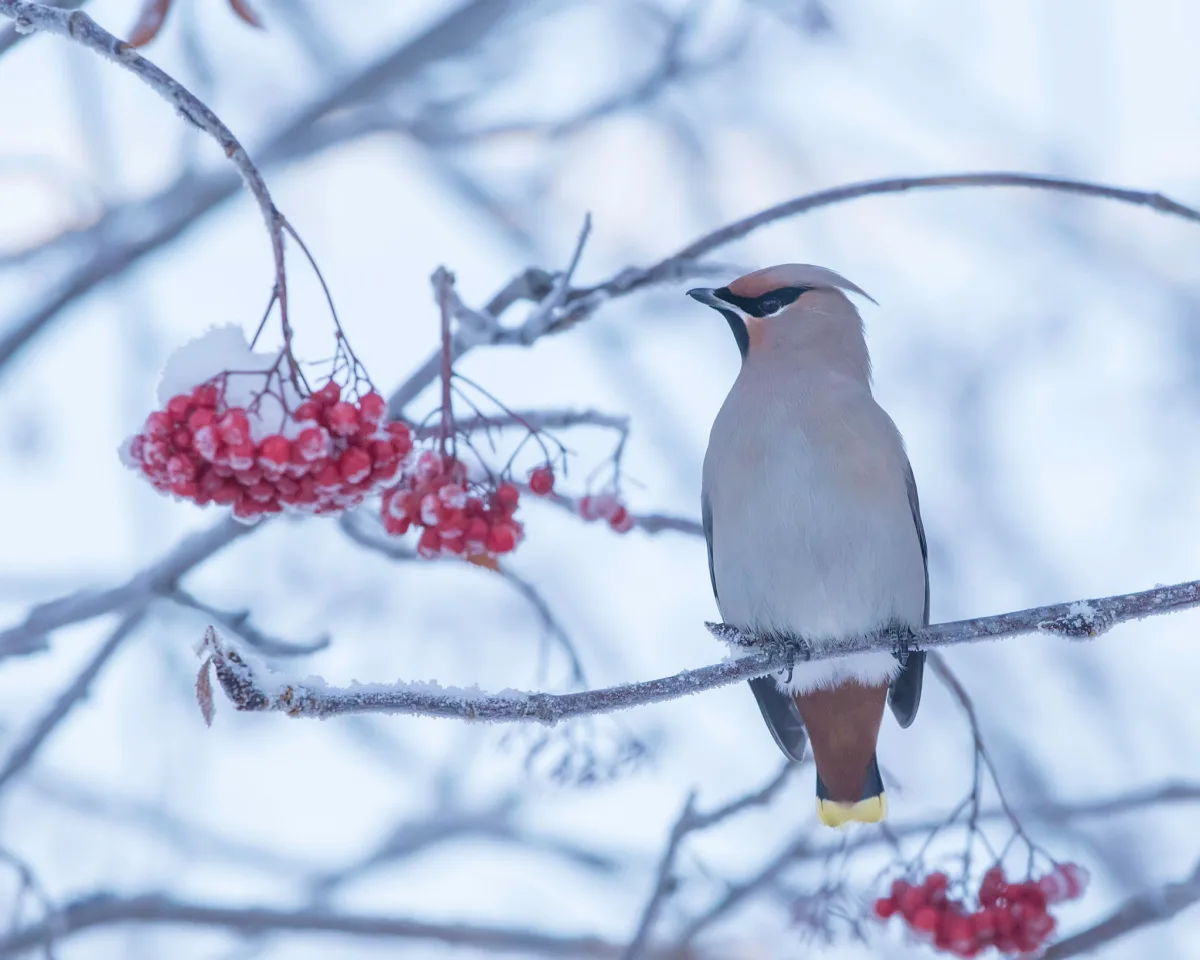
The small Mountain Ash trees are under 40 feet, bloom in spring, flush out in berries in summer, and have incredible fall color.
The ripe fruit while stunning against snow and stark winter skies also assist a multitude of winter wildlife.
Along with the many species of birds, the stems are browsed by moose and deer while martens, hares, fishers, and squirrels use Mountain Ash for food and shelter.
Notable North American native species are American Mountain Ash (S. americana), Sitka Mountain Ash (S. sitchensis), Showy Mountain Ash (S. decora), and Western Mountain Ash (S. scopulina).
12. Wild Rose (Rosa sp.)
There is nothing like the fragrance of wild roses in bloom in early spring. Winter wildlife agree because they spread the bright pulp all over the snow as they attack the vibrant red rosehips in winter.
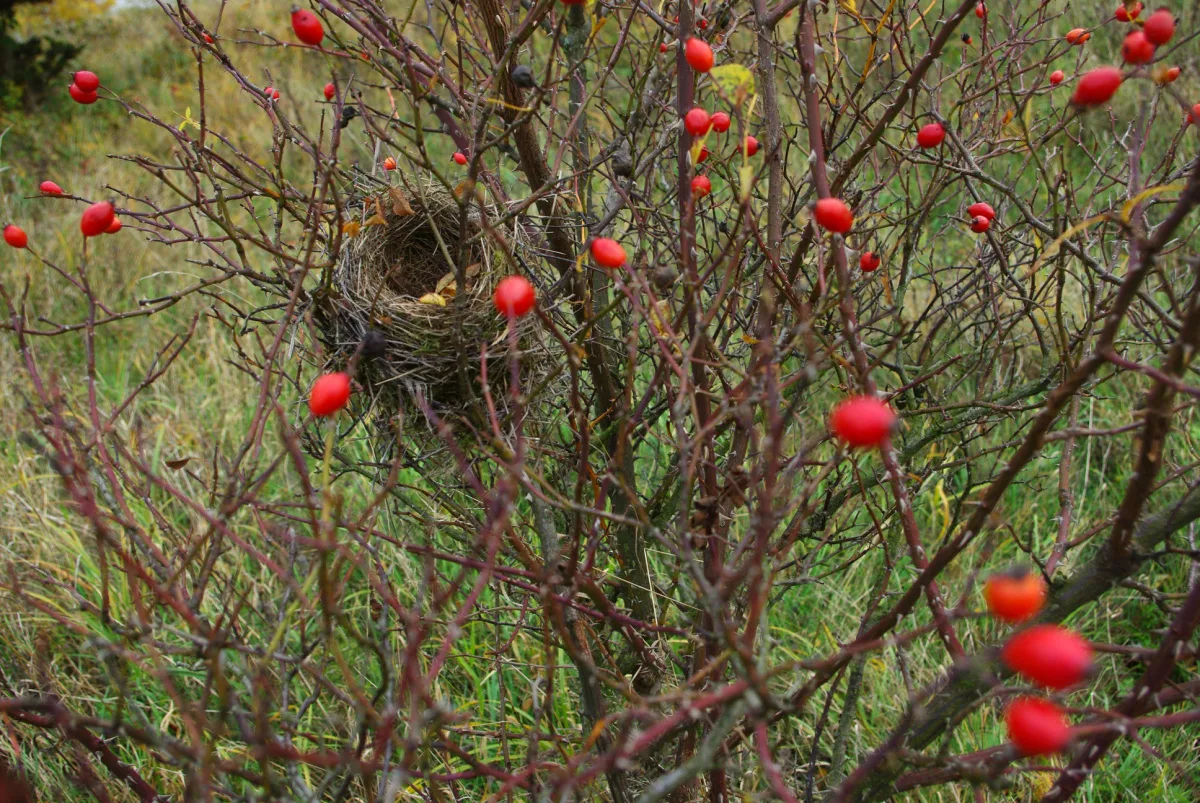
Squirrels, rabbits, waxwings, and finches feast and spread the seeds to encourage colonies of the 20+ wild rose species native to North America.
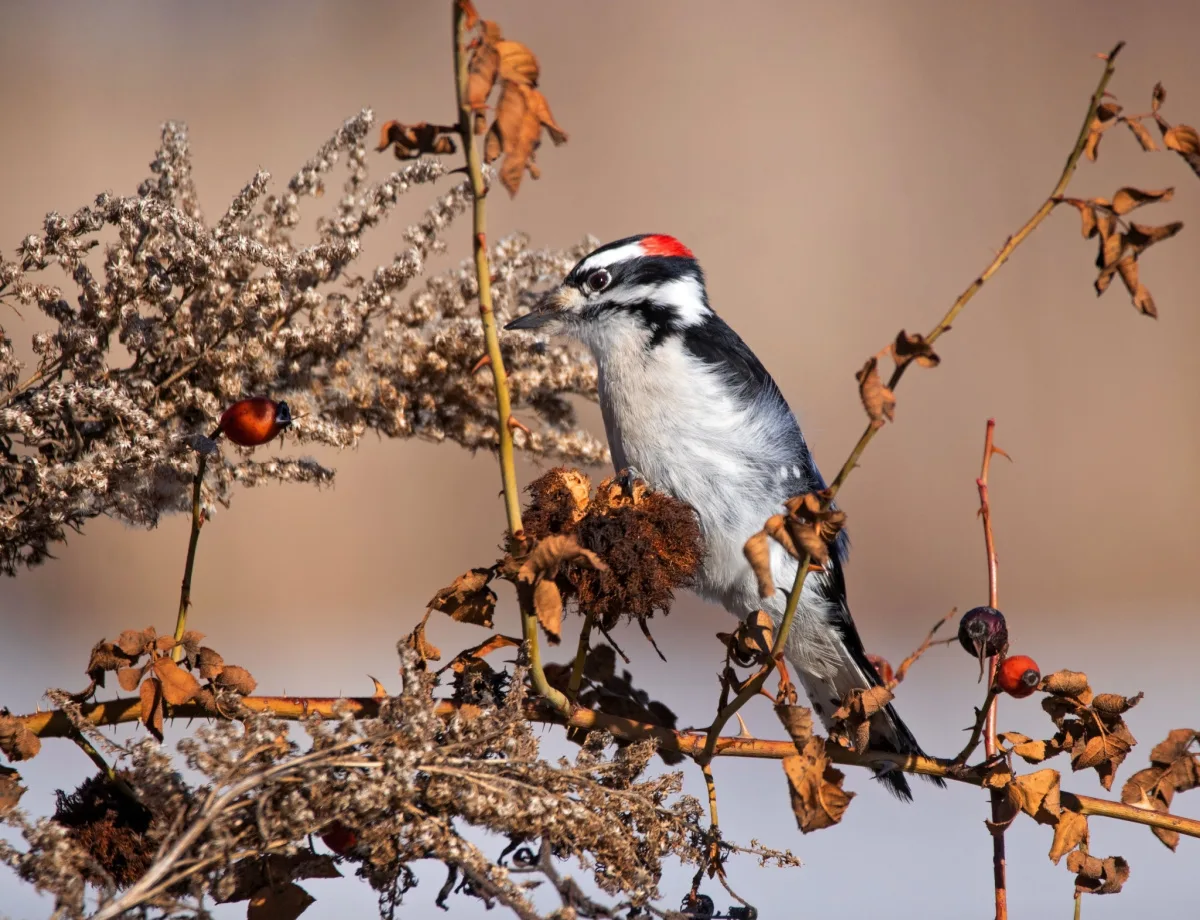
The nutritious hips dangle from frozen prickled branches, conspicuous against the snow.
In natural or wild landscaping, wild roses are great for privacy, fragrant flowers, pollinators, and supporting wildlife in winter.
13. Spicebush (Lindera benzoin)
The host plant of the Spicebush Swallowtail Butterfly, Spicebush grows 5 to 12 feet tall in zones 4 to 9.
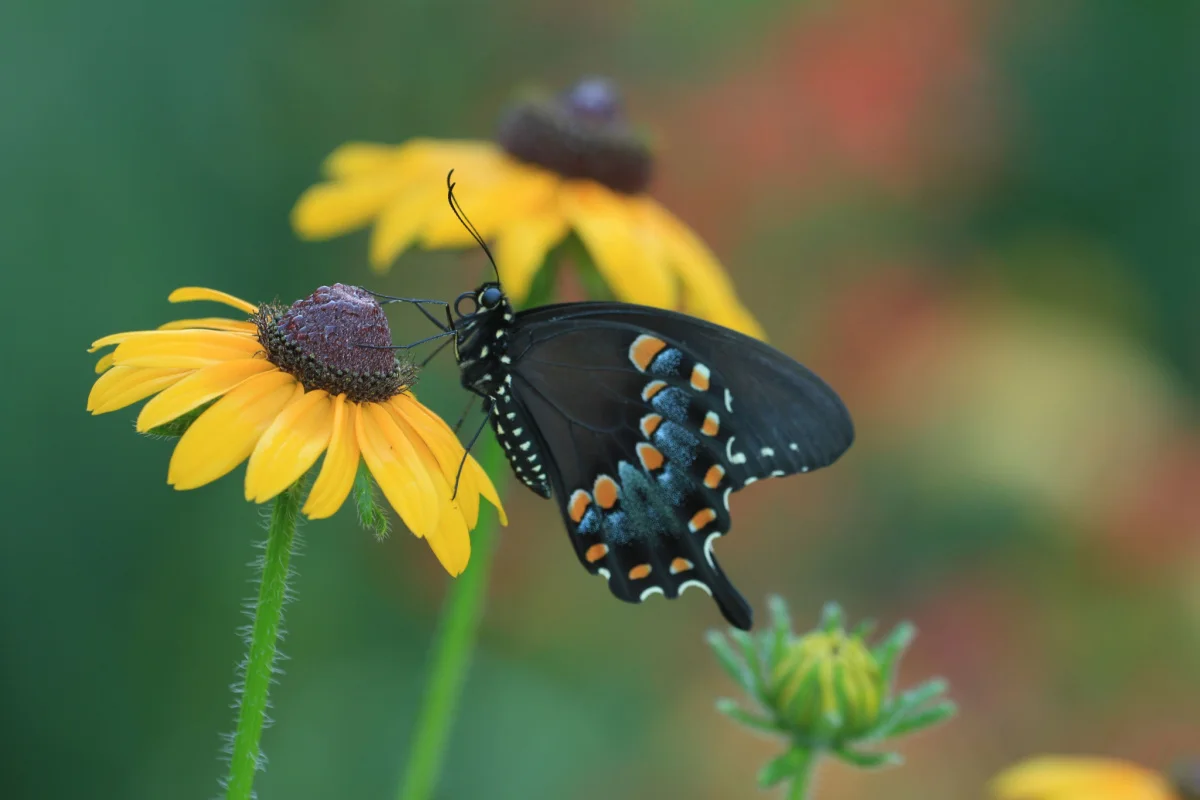
Spicebush Swallowtail pupate over winter in leaves and debris under plants. It is important to let leaf litter lie in some areas to avoid sweeping up the little pre-butterflies.
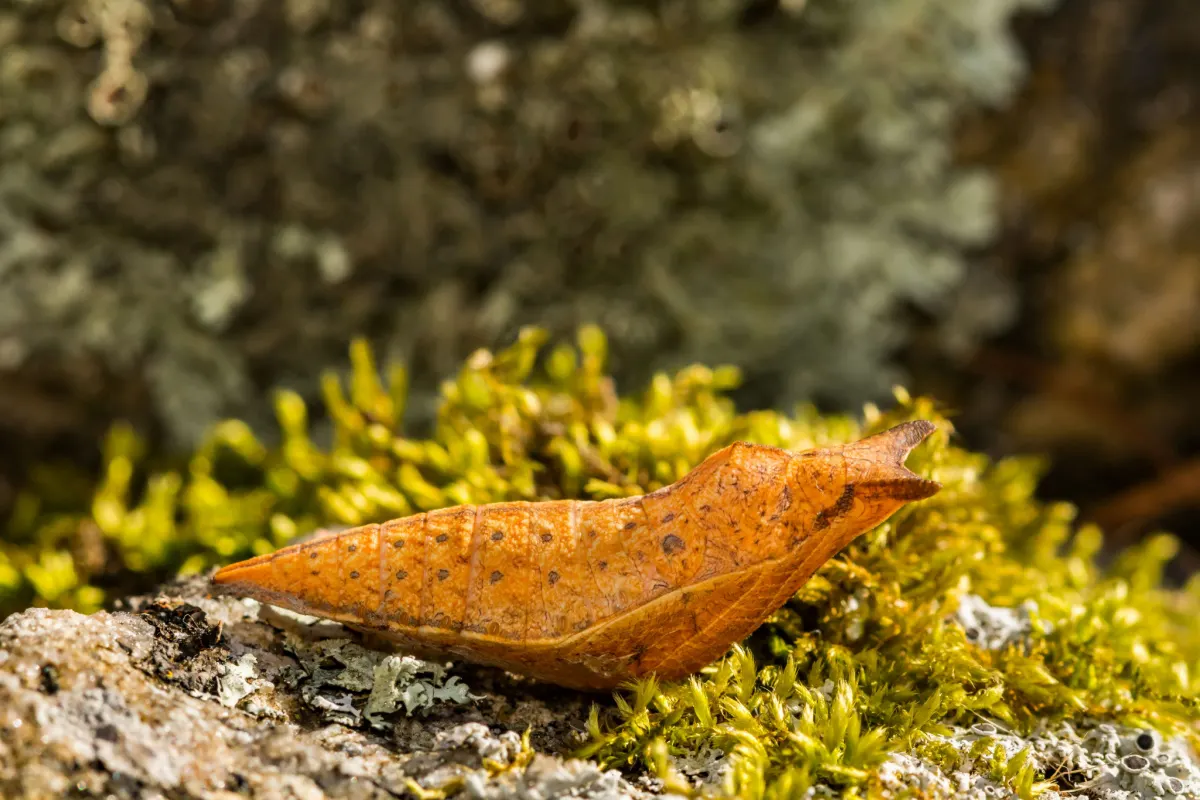
Female plants also produce red, high-fat berries loved by southward bound migrating birds in fall.
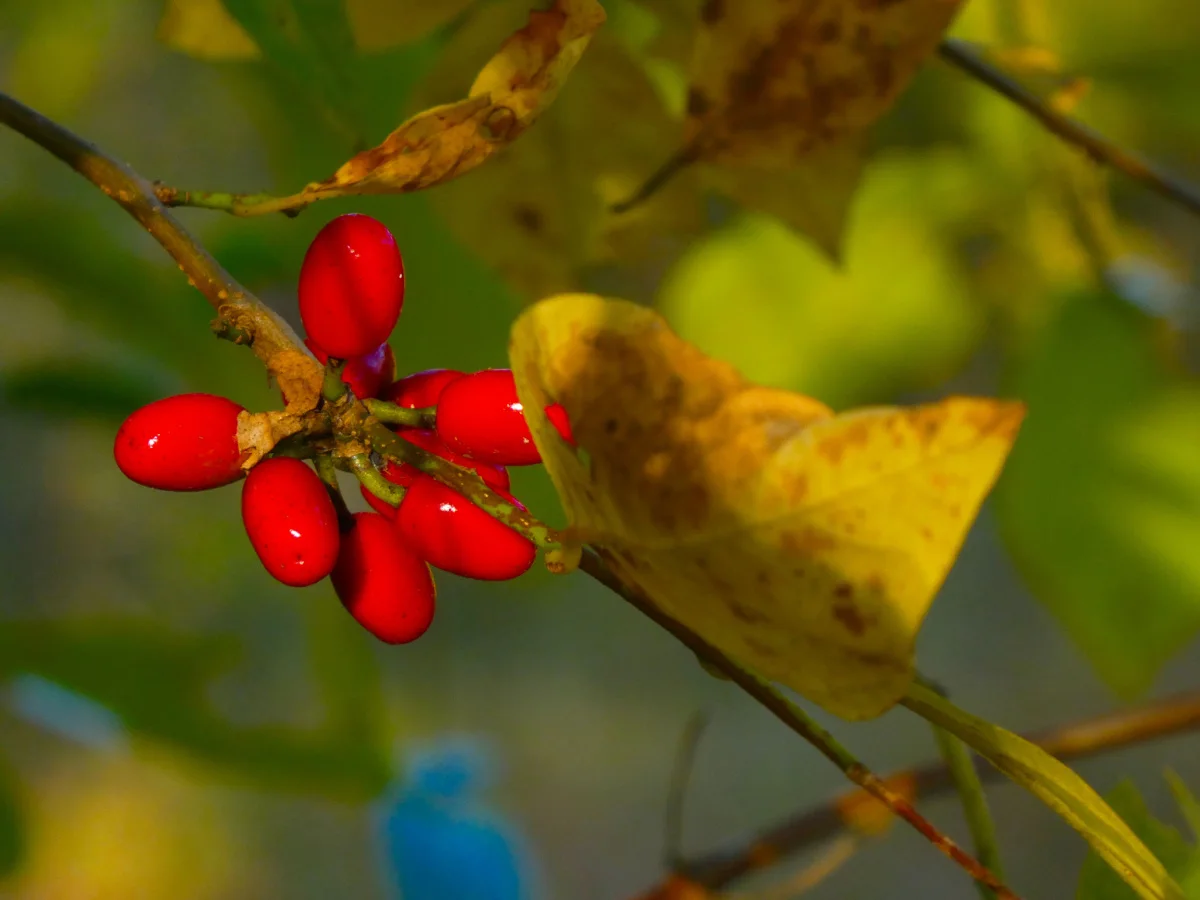
14. Chokeberry (Aronia sp.)
These small North American trees grow 6 to 8 feet tall in zones 4 to 9 with winter berries loved by grouse, waxwings, and norther flickers.

Chokeberry is a little different than chokecherry trees (Prunus sp.) that produce a more tender fruit prized by many summer and fall bird and wildlife visitors.
Chokeberry fruit is tougher with thicker skins so persists for the palates of hardier winter-savvy birds and mammals.
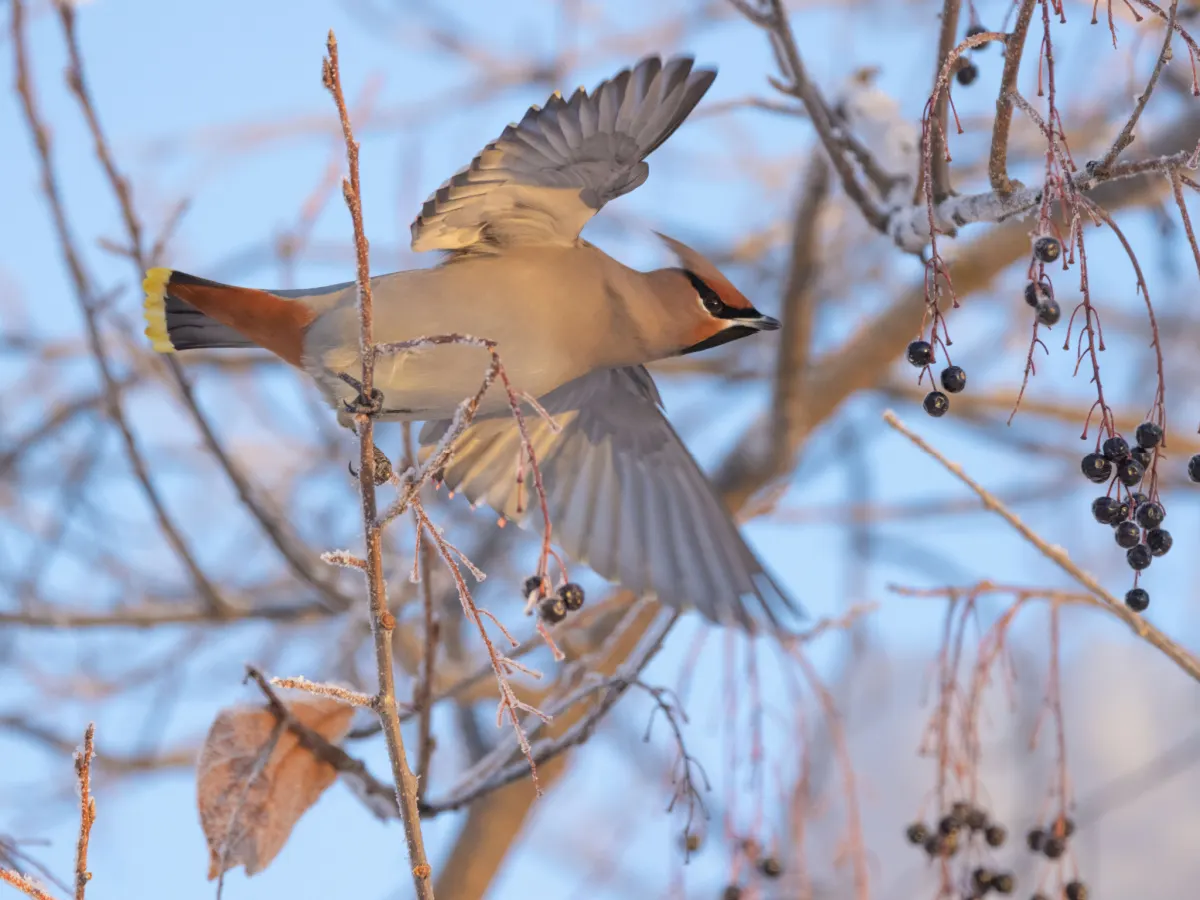
Look for Purple Chokeberry (A. prunifolia), or Black Chokeberry (A. melanocarpa), or Red Chokeberry, (A. arbutifolia).
Tree Nuts
15. Hickory (Carya)
About 12 species of Hickory are native to North America, including some of our favorite nuts like pecans (C. illinoinensis).
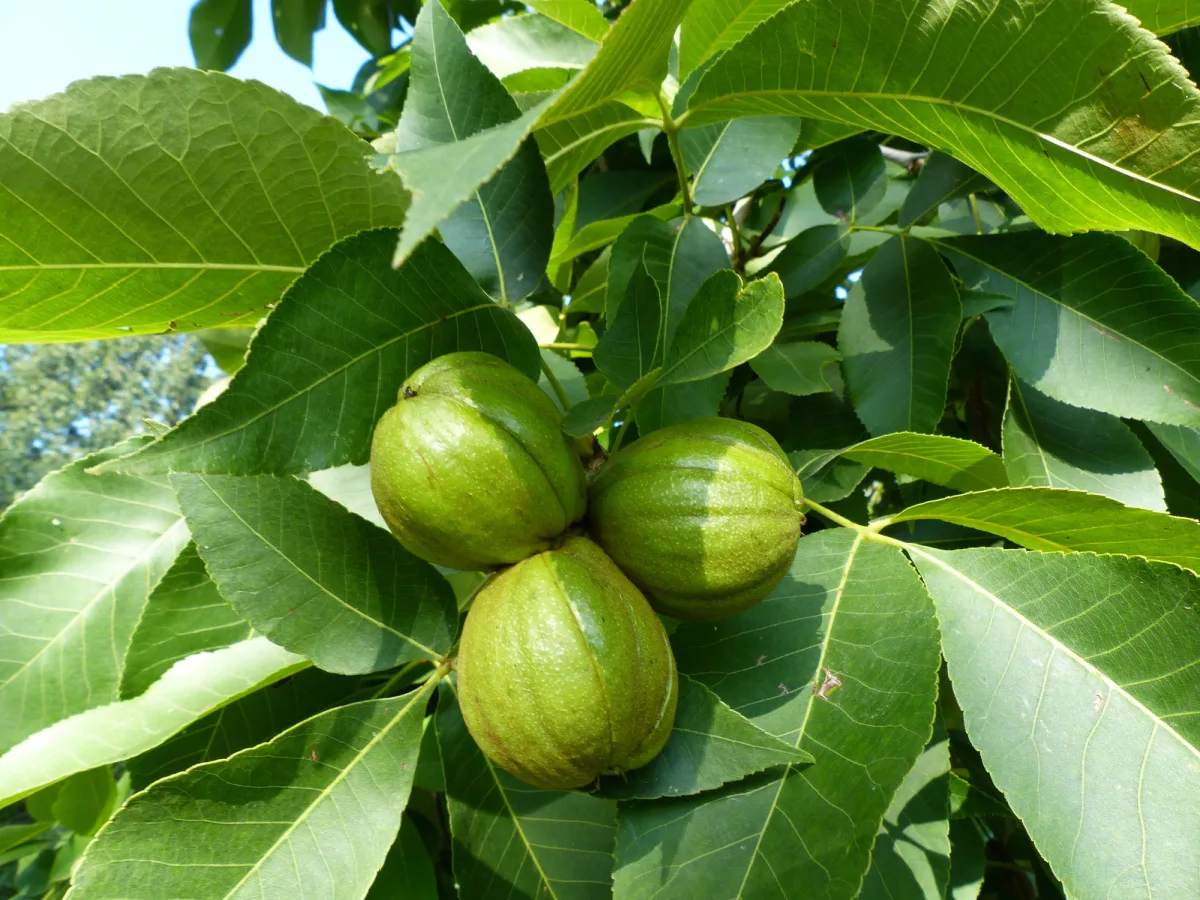
Hickory species such as Shagbark Hickory (Carya ovata) and Mockernut Hickory (Carya tomentosa) are enjoyed by animals, birds, and humans. Species like Bitternut Hickory (Carya cordiformis) and Pignut Hickory (Carya glabra) are best left for birds and animals, usually too bitter for most people.
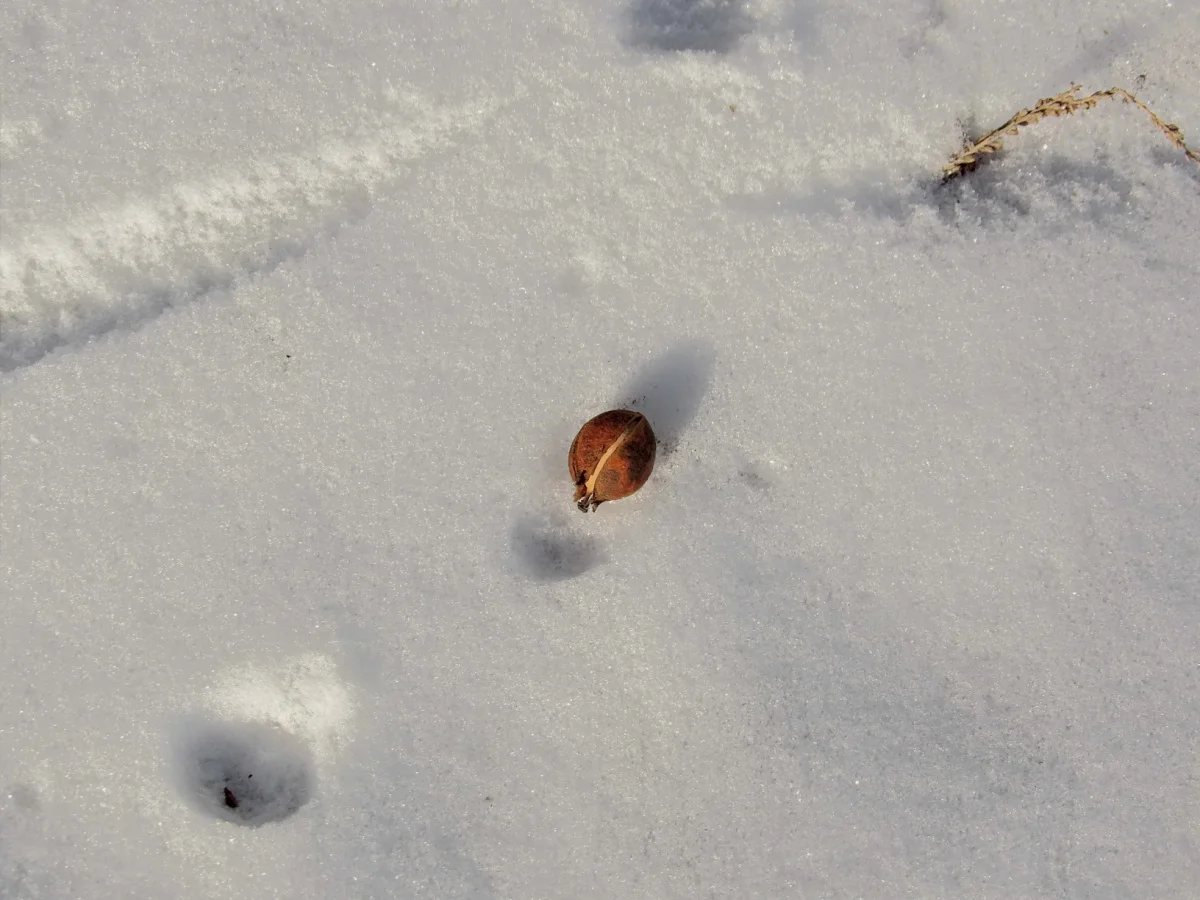
Slow growing trees, they are worth protecting just for their incredible value to wildlife. In a bumper year, a Shagbark Hickory can produce as much as 50 to 70 quarts of nuts!
Wild turkeys, woodpeckers, nuthatches, grosbeaks, and blue jays are just some of the birds found in Hickory trees in winter.
16. Oaks (Quercus sp.)
Made more mighty, oaks support and strengthen wildlife, but especially pupating butterflies, hosting more than 530 species of caterpillars!
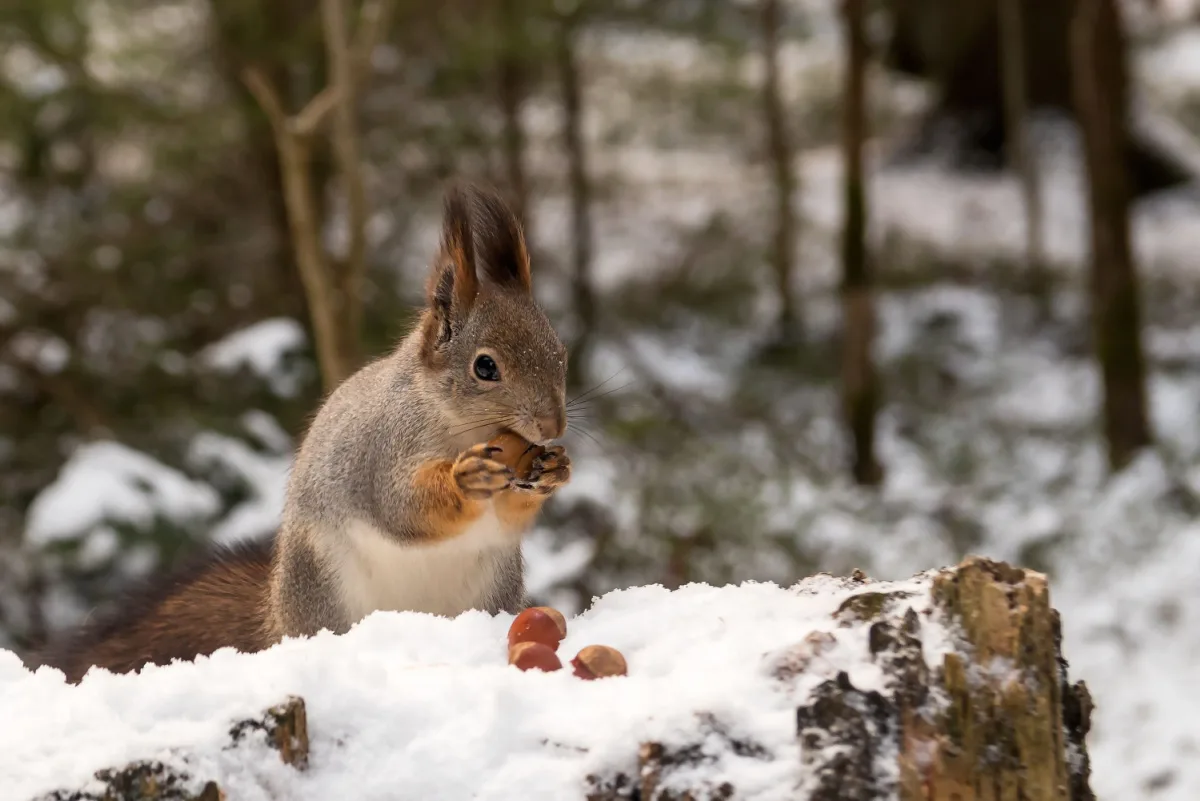
Oaks reach 50 to 90 feet, supporting insectivorous and acorn adoring birds such as northern flickers, wild turkeys, blue jays, and woodpeckers as well as many small, medium, and large animals.
White Oak species such as Quercus alba and Quercus bicolor have larger, more digestible acorns that drop annually, making them excellent one-stop-shop wildlife support systems.
17. Beechnuts (Fagus sp.)
The American Beech (Fagus grandifolia) is a vital North American native tree that supports wildlife and birds, especially in winter.
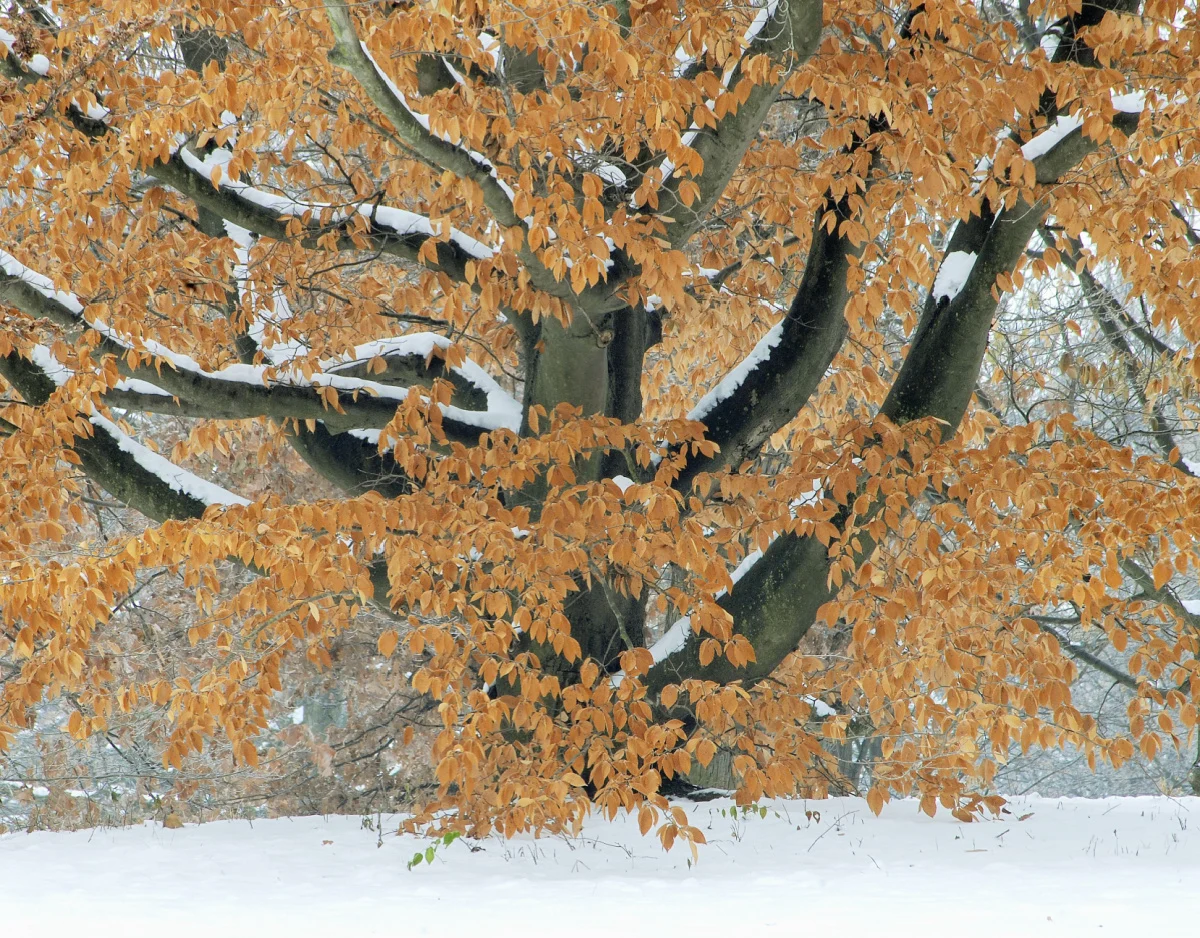
Beech trees dominate in the landscape, and at maturity, they range in size from 50 to 80 feet tall, living up to 400 years.
In winter, blue jays, downy woodpeckers, chickadees, nuthatches, and finches are attracted to the vital food source and protective branches of Beech trees.
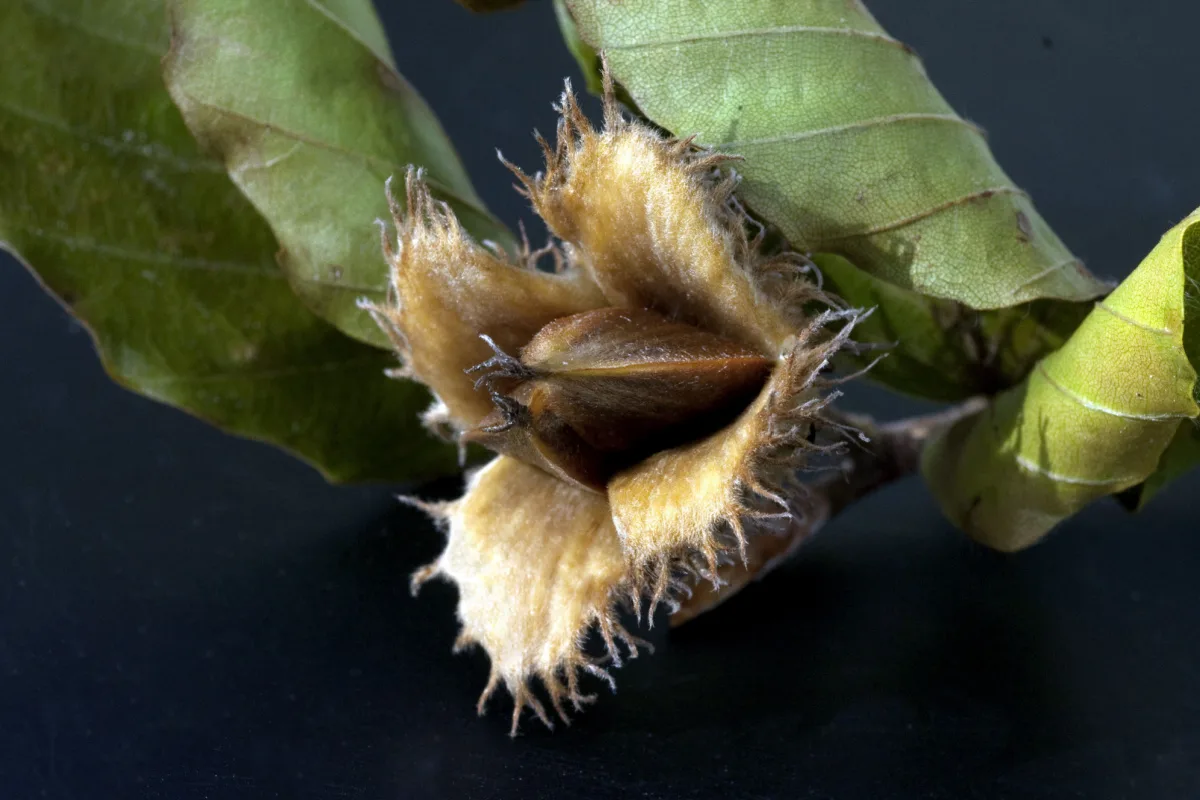
Flowering Perennials
Along with letting leaf litter lie in some areas, some perennials can be left ‘untidied’ for the winter to help support birds and wildlife in winter.
Seedheads of asters (Symphyotrichum sp.), perennial sunflowers (Helianthus sp.), Coneflowers (Echinacea sp.), and black-eyed-Susans (Rudbeckia sp.) are notoriously nutritious for winter wildlife.
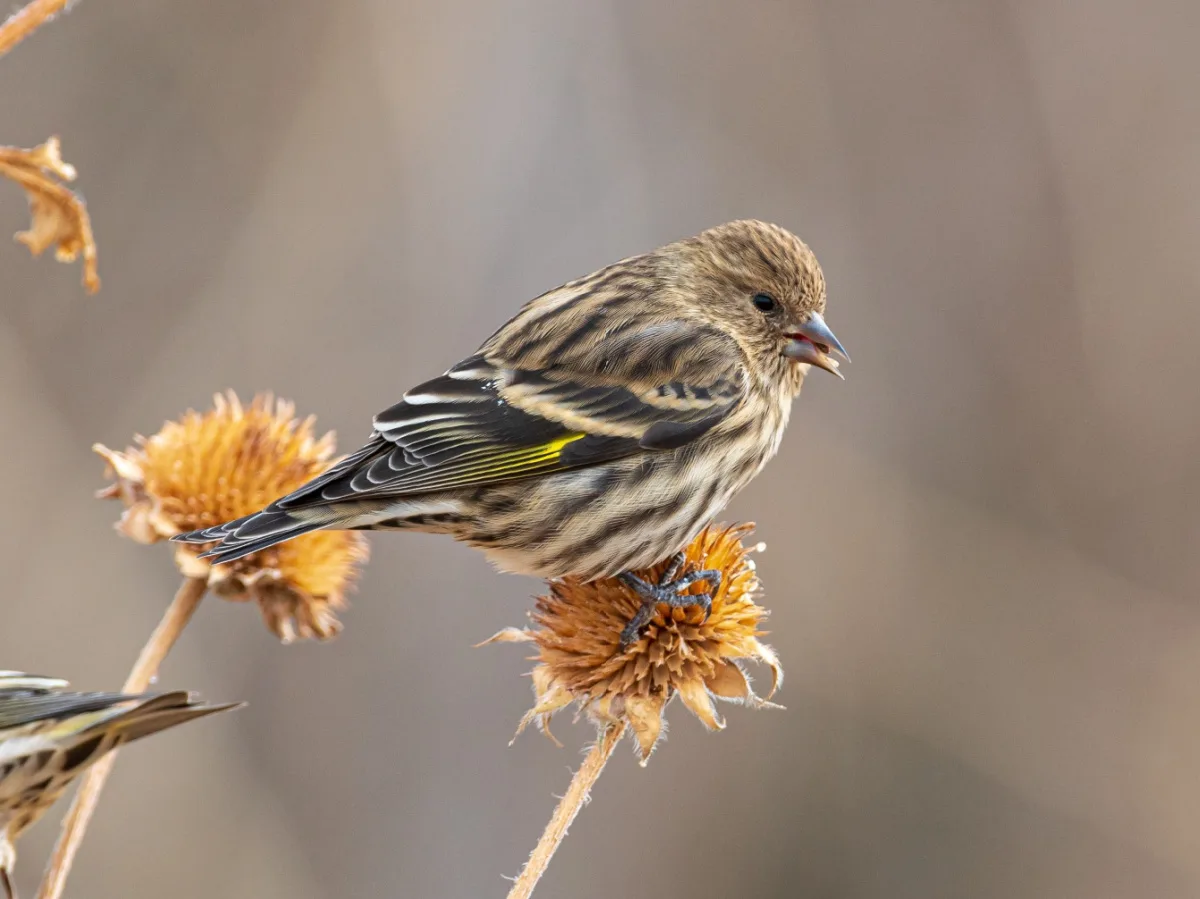
Desiccated and frozen perennial stems, leaves, and debris hide protein packed snacks of overwintering insects that help support wildlife.
Of course, keeping damaging insects from prolific breeding is a good reason to keep things tidy. Beneficial insects such as butterflies and predatory insects like ladybugs will have advantage in leaf litter as well.
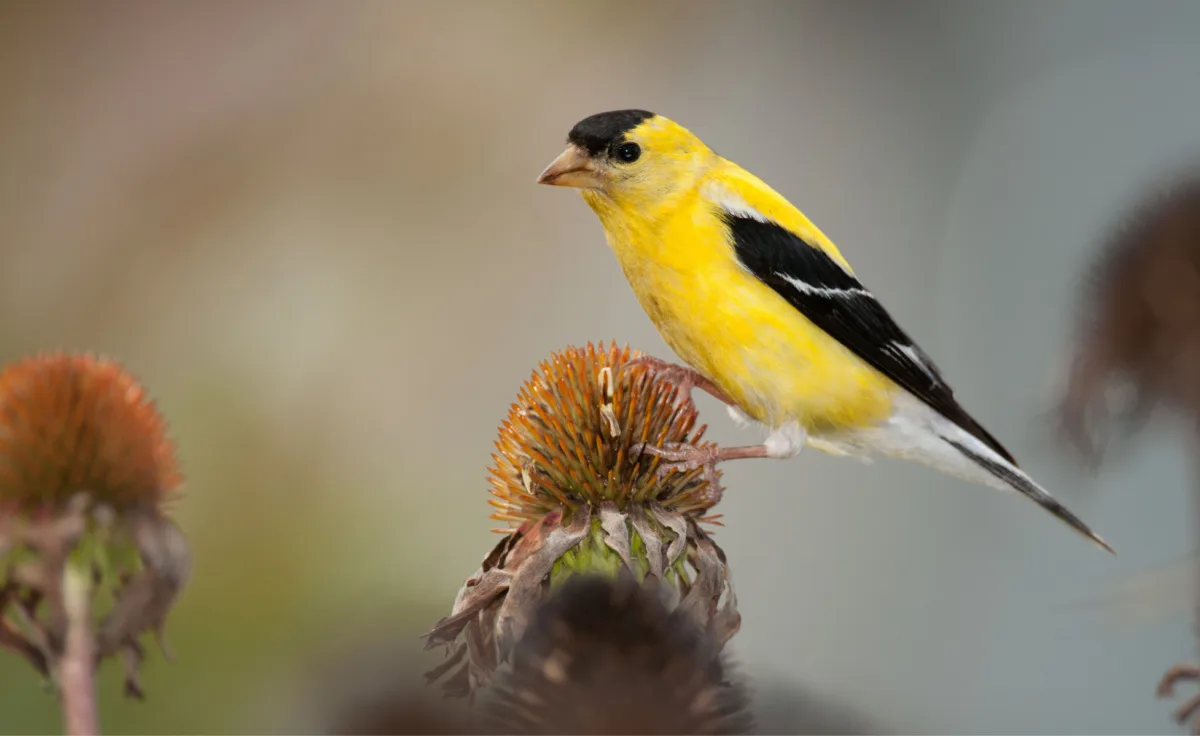
American goldfinch, chickadee, blue jays, and nuthatches are sure to find relief with food and shelter amongst the seedheads and plant debris.
Grasses
We know lots of Ornamental Grasses That Steal the Show in Fall, but some even persist through winter.
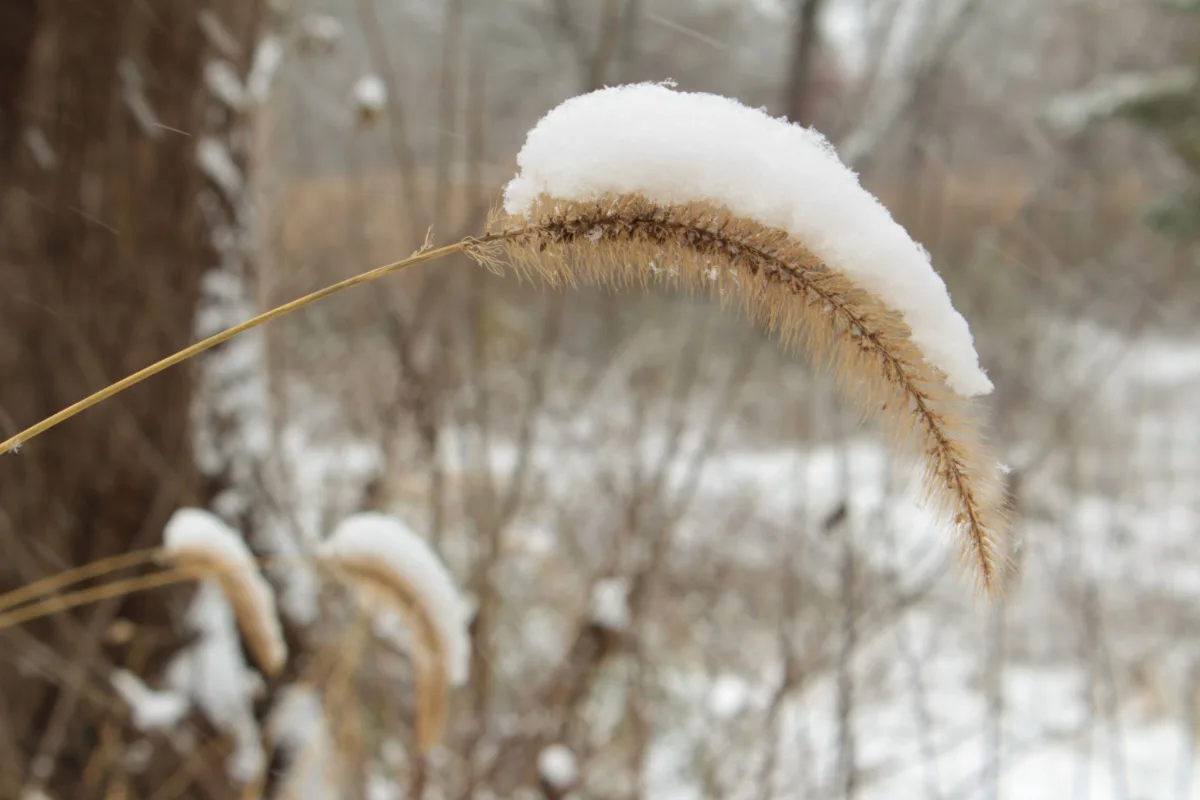
Grasses like ornamental annual millet (Pennisetum glaucum), little bluestem (Schizachyrium scoparium), and switchgrass (Panicum virgatum) are life saving. Living birdfeeders when we let them stand in the garden over winter.
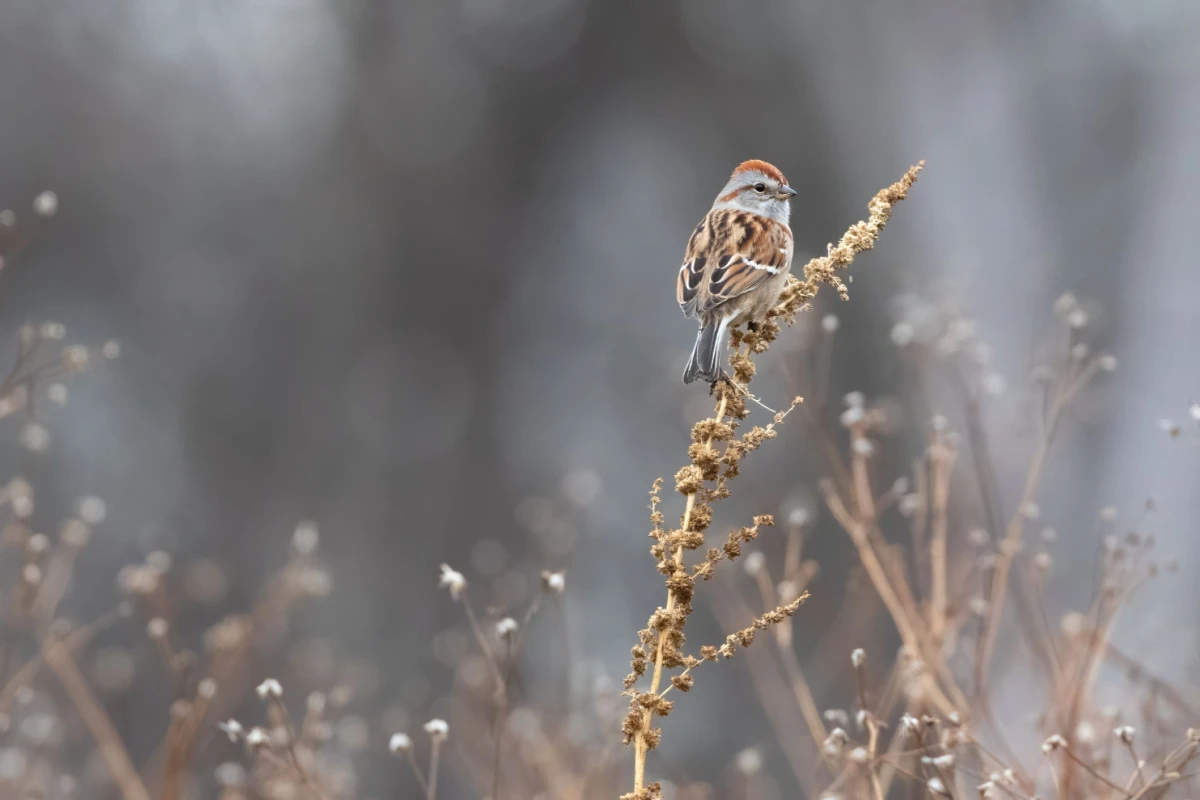
Chipmunks, squirrels, rabbits, and deer thrive on grass seed in winter, helping to form a happy ecosystem.
Birds such as cardinals, pine siskins, finches, buntings, and blackbirds love grass seeds and millet.
More Tips to Support Winter Birds and Wildlife
A place for warmed or flowing water can help thirsty birds and animals get enough water from ice and snow.
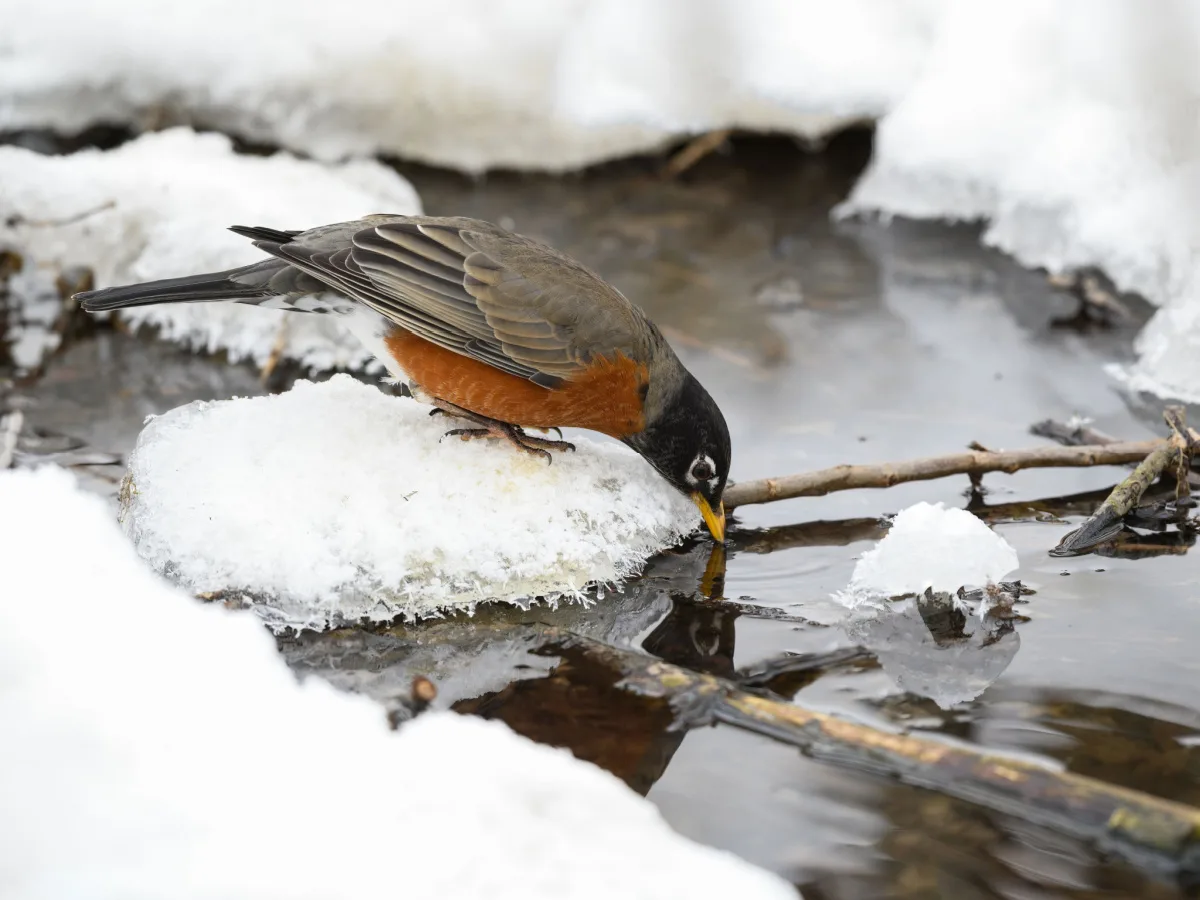
Predatory birds such as hawks and owls are an amazing sight. A great sign of a healthy balance in nature. Although it is challenging for small, at-risk birds, predatory birds can still be encouraged.
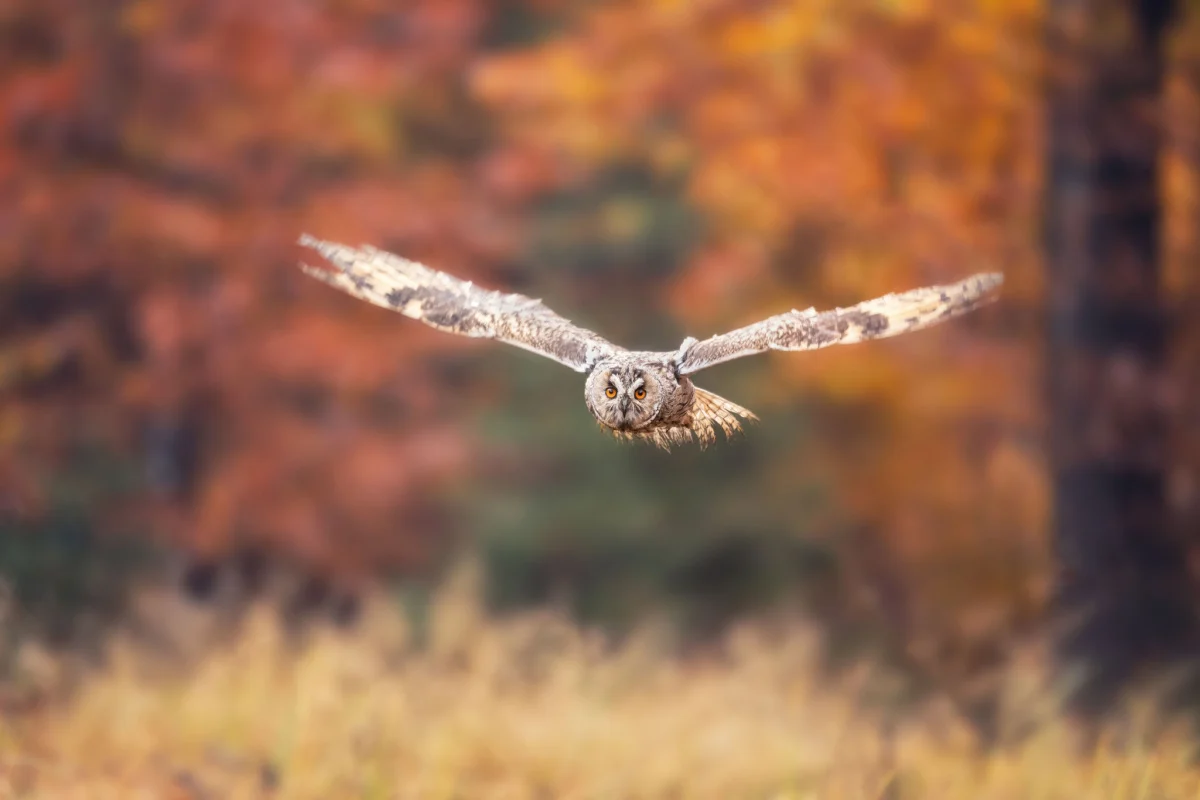
Along with letting leaf litter lie, perennials, grasses, trees, and shrubs host many overwintering insects too. They become lunch during winter, or an early spring snack for when the ground wakes up again.
